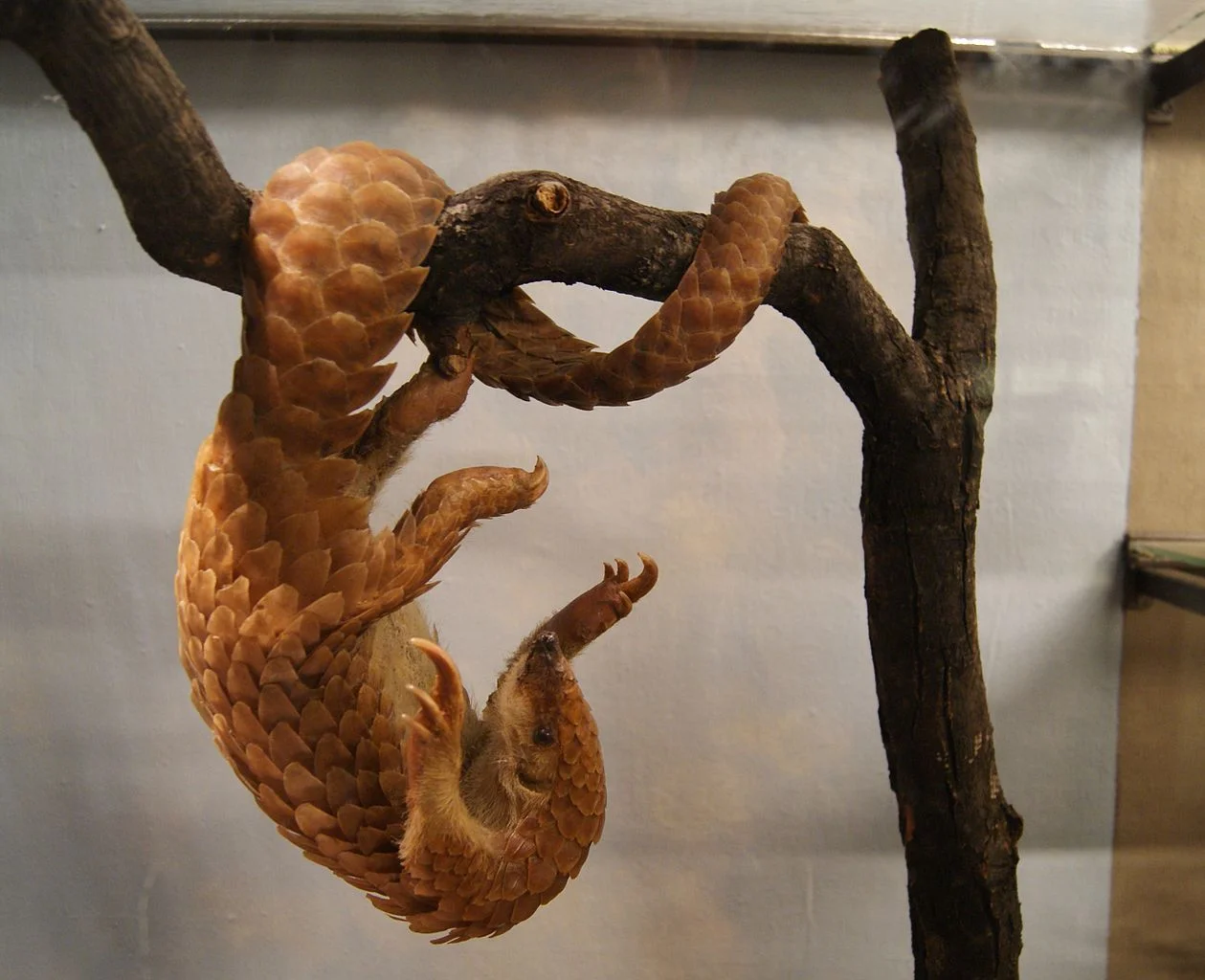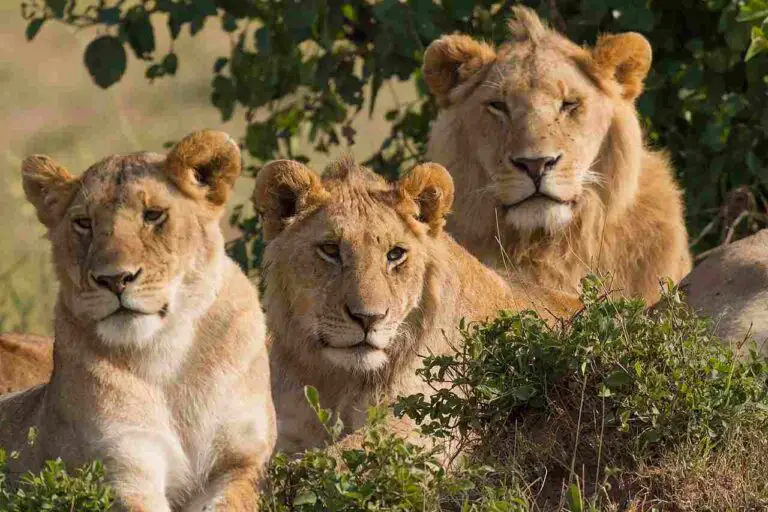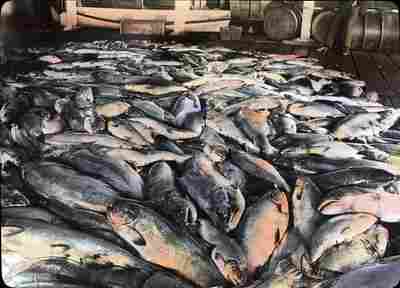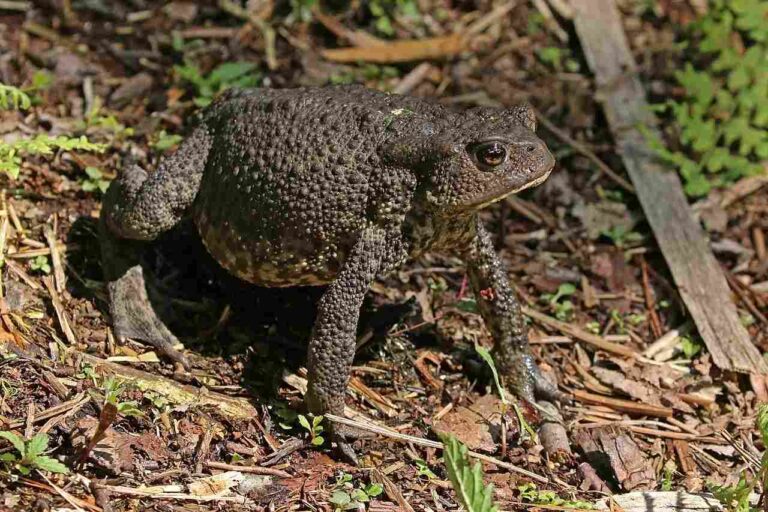Aardvark Vs Anteater Vs Armadillo Size, Weight, Overall Comparison
Aardvarks, anteaters, and armadillos, diverse members of the animal kingdom, exhibit unique characteristics, behaviors, and habitats. Exploring their differences sheds light on the rich biodiversity within the order Xenarthra.
I. Dietary Distinctions:
– Aardvarks are renowned for their exclusive diet of ants and termites, showcasing a specialized feeding behavior in the African savannas. In contrast, armadillos consume bugs, larvae, and plants, while anteaters exclusively feed on ants and termites in their South American habitats.
II. Size and Body Structure:
– Aardvarks, with their distinctive long snouts and large ears, are native to Africa and grow up to 1.5 meters long. Armadillos, small to medium-sized mammals, are characterized by a bony armor shell, emphasizing their adaptation to various environments. Anteaters, with long and sticky tongues, possess a unique body structure optimized for ant and termite consumption.
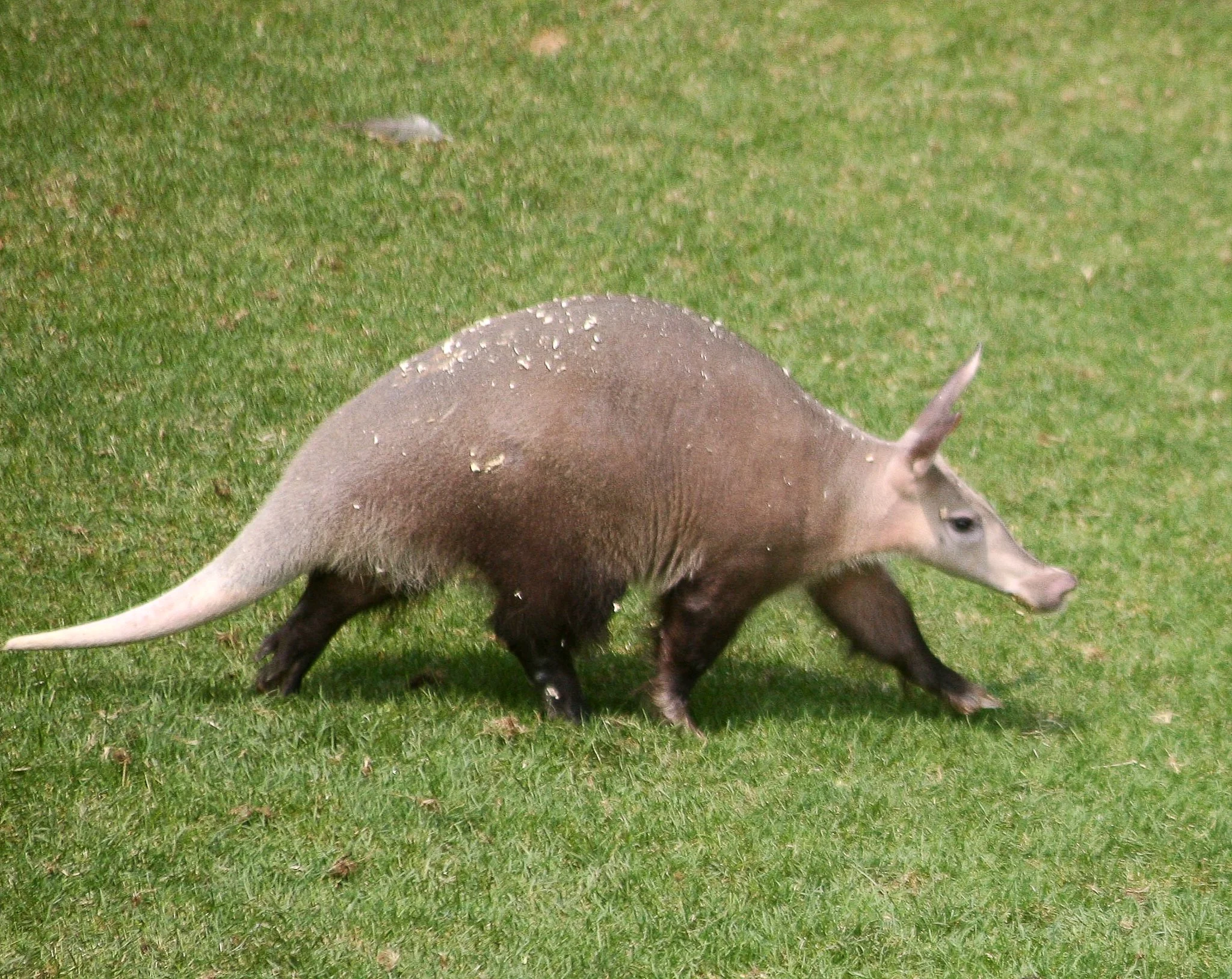
III. Geographic Distribution:
– Aardvarks are exclusive to Africa, thriving in the grasslands and savannahs. Armadillos primarily inhabit the Americas, showcasing adaptability to diverse climates, while anteaters are found throughout South America in tropical environments.
IV. Habitat Preferences:
– Aardvarks are adapted to the African grasslands and savannahs, while armadillos demonstrate versatility by thriving in various American ecosystems. Anteaters, on the other hand, inhabit South American tropical regions, showcasing habitat specialization for their preferred prey.
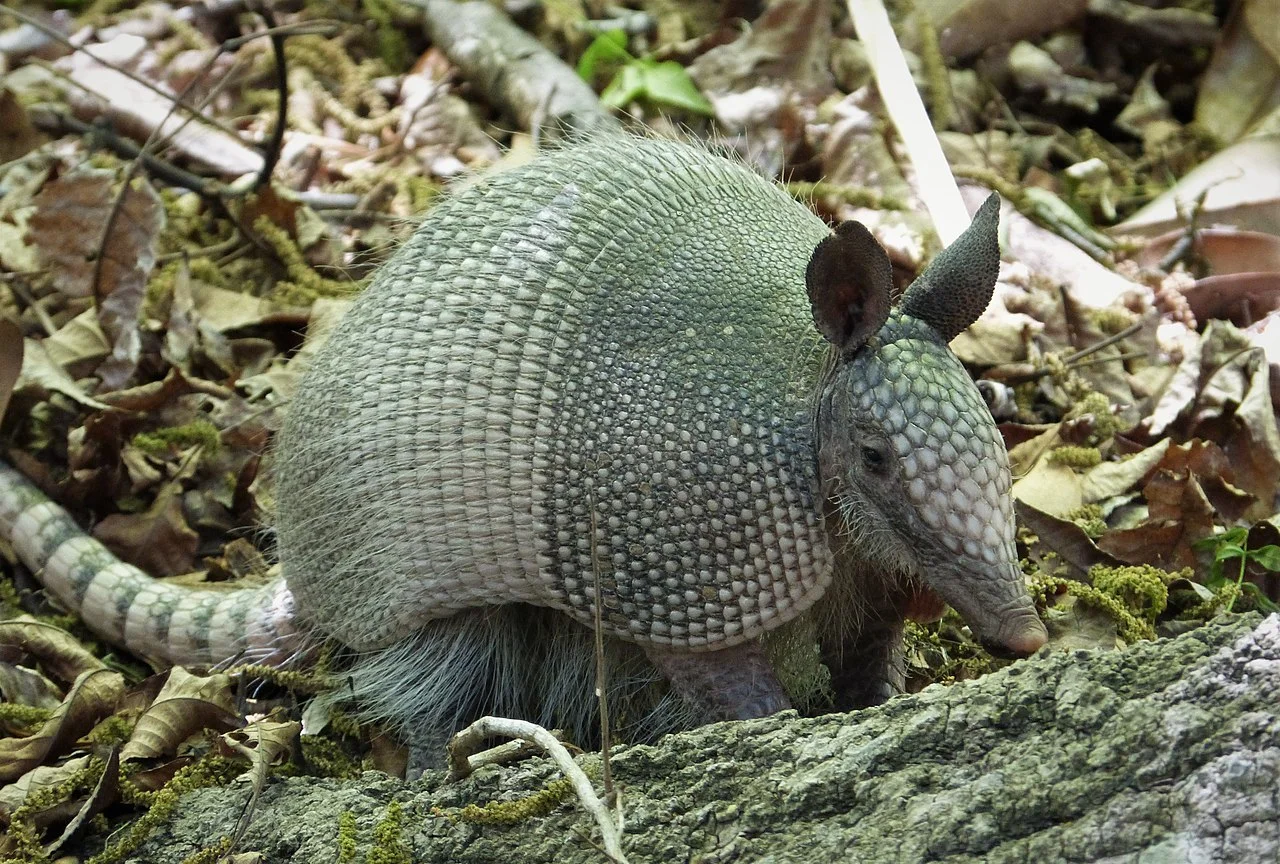
V. Social Behavior:
– Aardvarks are solitary animals, navigating African landscapes independently. Armadillos display varied social behaviors, with some species being more social than others. Anteaters are known to be predominantly solitary creatures, emphasizing their independence in foraging and territorial habits.
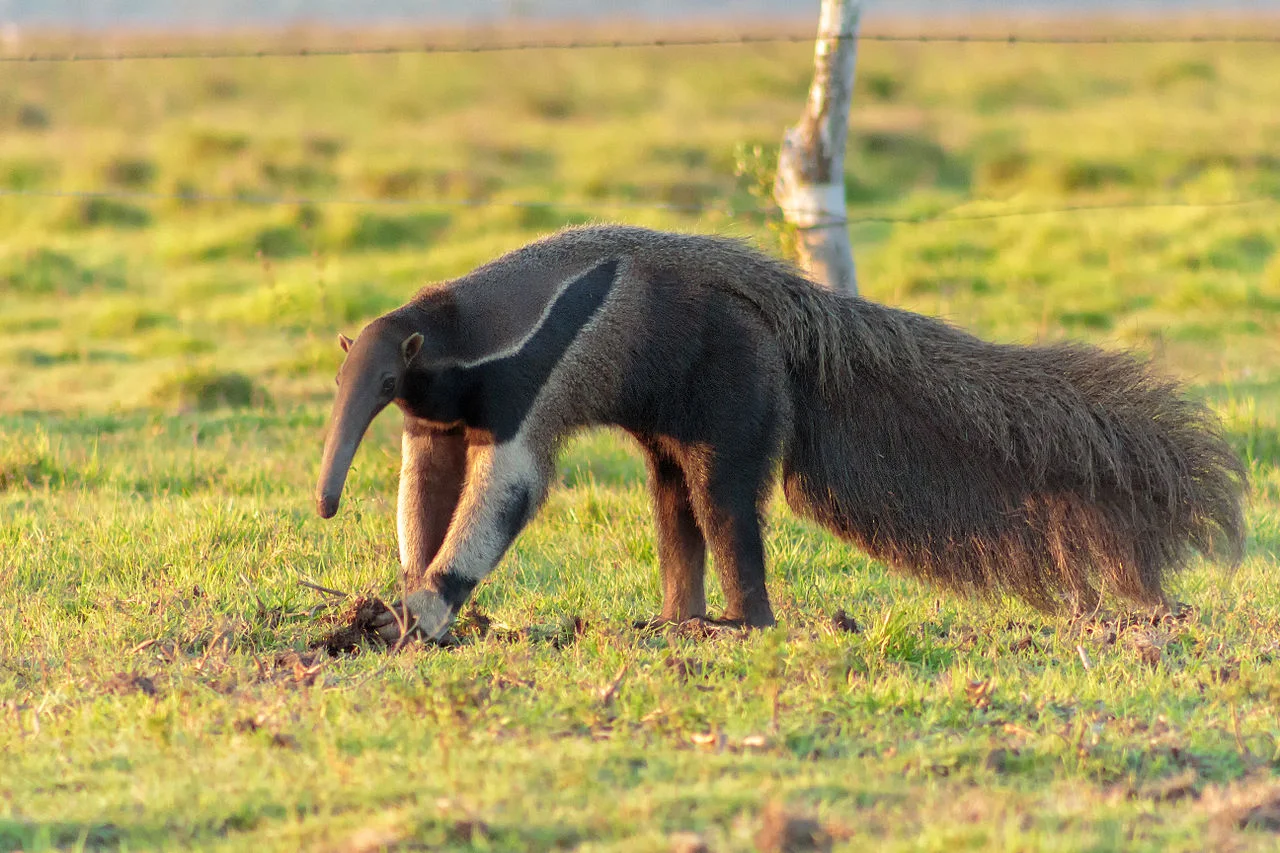
*Details of Comparison
| Criteria | Aardvark | Anteater | Armadillo |
| Taxonomy | Tubulidentata | Pilosa | Cingulata |
| Appearance | Pig-like snout, sparse hair | Elongated head, bushy tail | Armored shell |
| Size | 1.2 – 2.2 meters | 1.2 – 2.1 meters |
Varies by species
|
| Weight | 60 – 80 kg | 22 – 41 kg |
Varies by species
|
| Dentition | Specialized teeth | No teeth, long tongue |
Basic grinding teeth
|
| Physical Offensive Advantages | Powerful claws | Long tongue, strong forelimbs | Sharp claws |
| Physical Defensive Advantages | Thick skin | Sharp claws, strong tail | Bony shell |
| Speed | Limited | Moderate |
Variable among species
|
| Agility | Moderate | Agile |
Moderate; limited by shell
|
| Senses | Keen sense of smell | Excellent smell and hearing |
Limited eyesight, strong smell
|
| Overall Physical Capacity | Digging, insectivory | Ant and termite consumption |
Digging, omnivorous feeding
|
| Habitat Preference/Region | Savannas, sub-Saharan Africa | Forests, Americas |
Varied habitats, Americas
|
| Tracks | Zigzag patterns | Dotted prints |
Clawed prints with distinct shape
|
| Lifespan | Up to 23 years in captivity | 14 – 20 years in captivity |
Varies by species, generally 4 – 15 years
|
| Mode of Feeding | Insectivorous | Myrmecophagy | Omnivorous |
| Intelligence | Limited cognitive abilities | Moderate intelligence |
Basic problem-solving skills
|
| Social Behavior | Generally solitary | Mostly solitary |
Varies; some species solitary, others in small groups
|
| Mode of Reproduction | Solitary, brief mating pairs | Solitary, brief interactions | Varied; some monogamous, others more solitary |
| Parental Behavior | Female cares for single offspring | Female cares; males may protect | Maternal care varies among species |
| Proximity to Human Areas | Can be near settlements | Generally avoids | Some adapt well to human-altered areas |
| Behavior Toward Humans | Shy and elusive | Avoids interaction; defensive if cornered | Behavior varies; some may tolerate, others elusive |
| Danger Posed to Humans | Generally not dangerous | Not aggressive, but claws can cause injury | Generally not dangerous; may carry diseases |
| Associated Precautions | Caution during encounters | Maintain safe distance | Exercise hygiene, avoid direct handling |
| Conservation Status | Least Concern (IUCN Red List) | Varies by species; some Least Concern, others Threatened | Varies by species; some Least Concern, others Threatened |
Key Points
Aardvark:
- Specialized for digging and insectivory.
- Shy, nocturnal, with a keen sense of smell.
- Generally not dangerous to humans.
Anteater:
- Myrmecophagy, excellent sense of smell and hearing.
- Moderate intelligence, mostly solitary.
- Generally not aggressive but may defend if threatened.
Armadillo:
- Versatile, with adaptations for digging and omnivorous feeding.
- Varies in behavior and habitat preference.
- Generally not dangerous; may carry diseases like leprosy.
1. Taxonomy:
Aardvark (Orycteropus afer):
Kingdom: Animalia
Phylum: Chordata
Class: Mammalia
Order: Tubulidentata
Family: Orycteropodidae
Genus: Orycteropus
Species: afer
Anteater (Myrmecophagidae family):
Kingdom: Animalia
Phylum: Chordata
Class: Mammalia
Order: Pilosa
Family: Myrmecophagidae (includes giant anteaters and tamanduas)
Armadillo (Dasypodidae family):
Kingdom: Animalia
Phylum: Chordata
Class: Mammalia
Order: Cingulata
Family: Dasypodidae (various genera and species within this family)
2. Appearance:
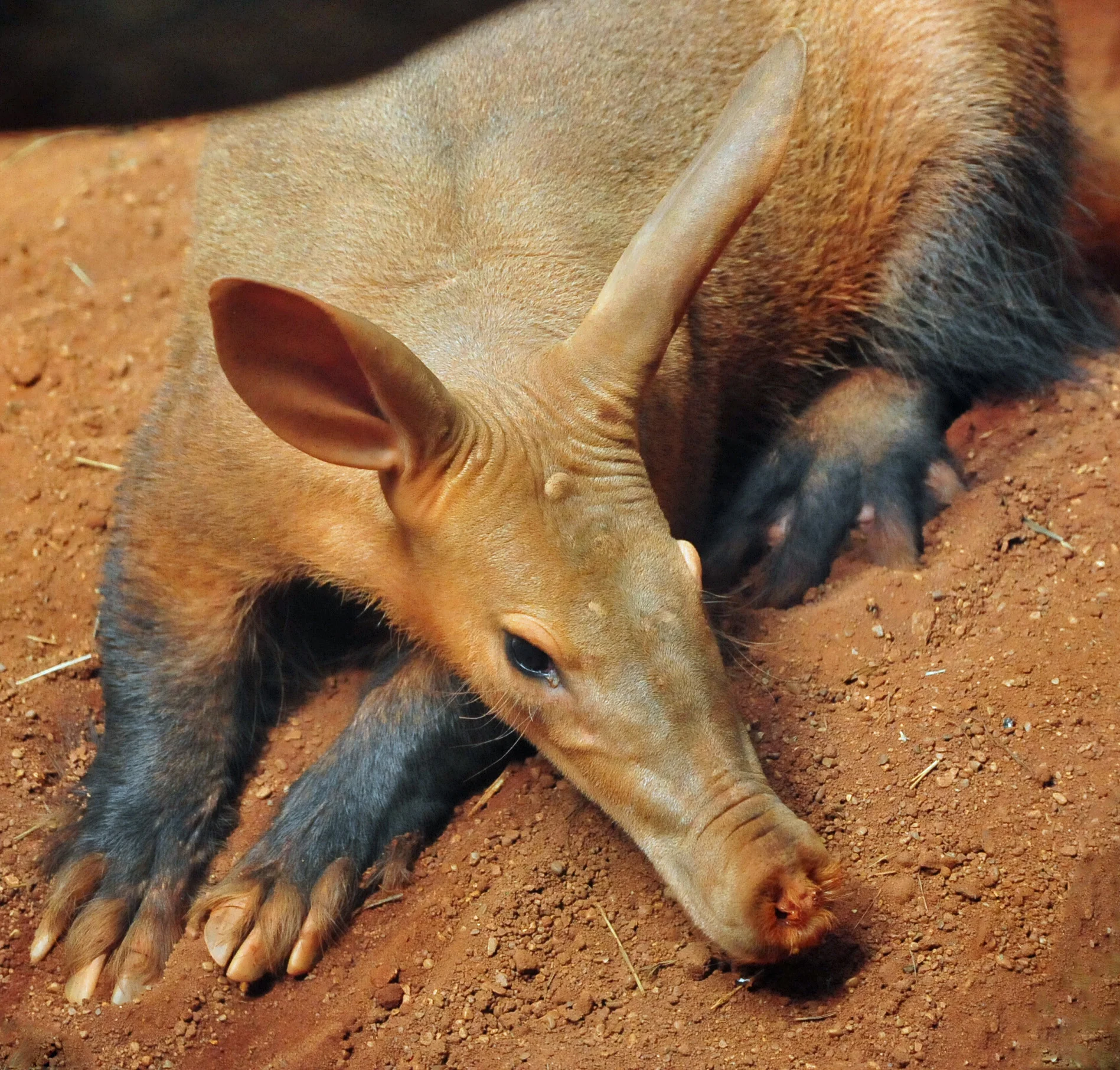
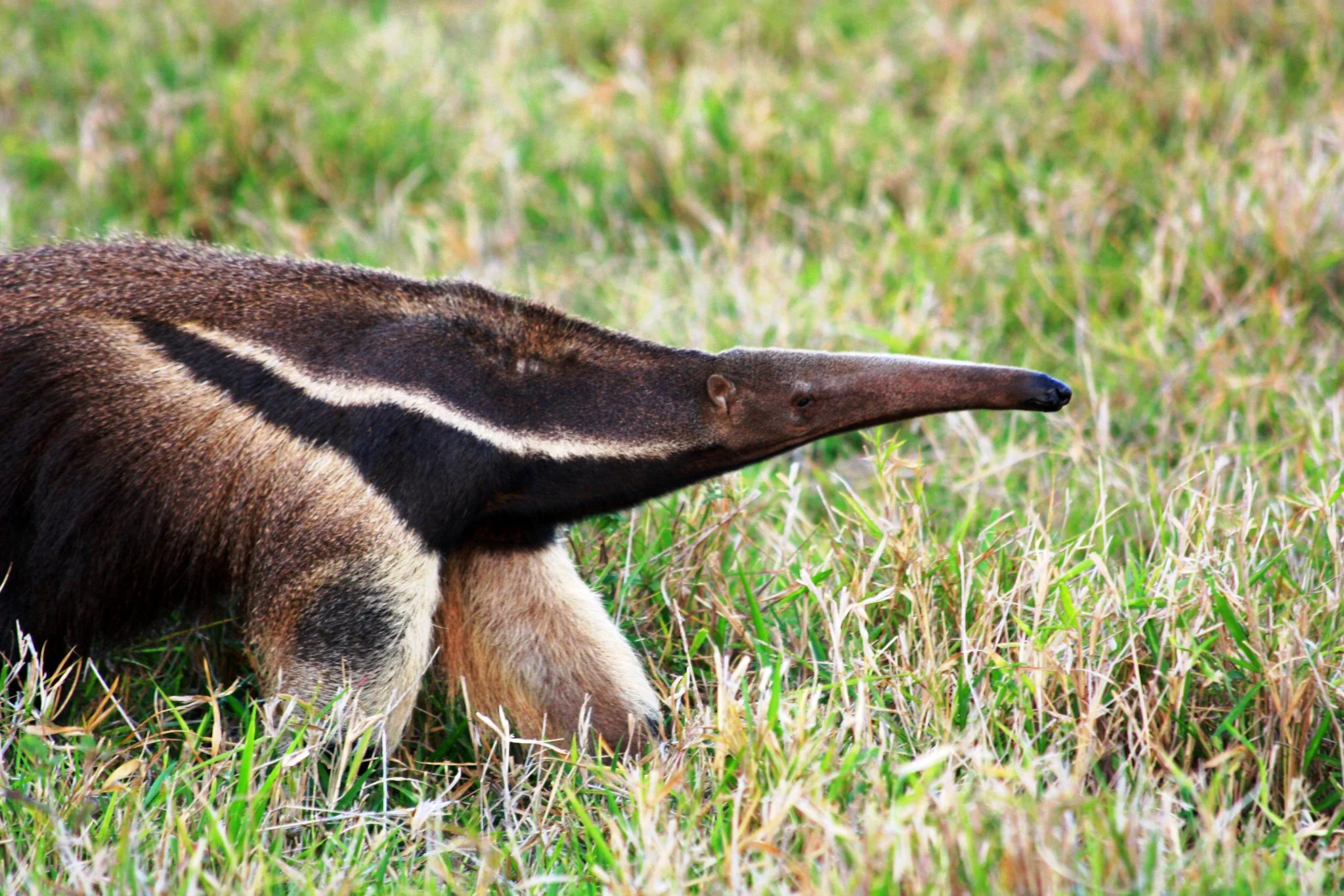
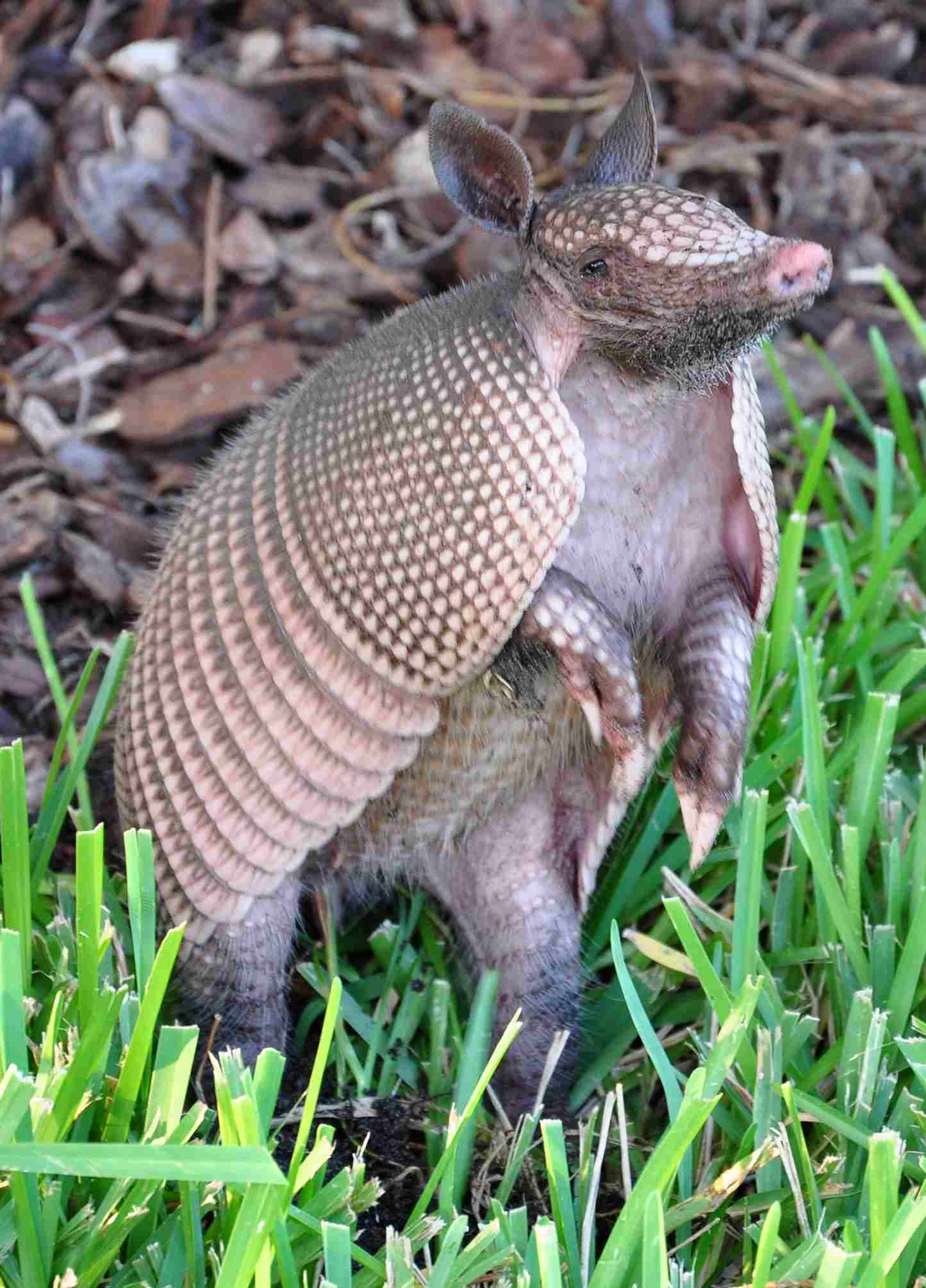
Aardvark:
Robust body with a pig-like snout, large ears, and a long, sticky tongue.
Gray or pinkish-brown skin with sparse hair.
Anteater:
Elongated head and snout, long bushy tail.
Coarse fur, varying in color, often with distinctive markings.
Armadillo:
Armor-like shell composed of bony plates.
Short legs, sharp claws, and a pointed snout.
Comparison:
Aardvarks have a pig-like appearance, while anteaters have a more elongated snout, and armadillos are distinguished by their armored shell.
Ecological Implications:
Aardvark’s appearance aids in digging for insects; anteater’s snout is specialized for ant and termite consumption; armadillo’s armor provides protection from predators.
3. Size:
Aardvark:
Length: 1.2 – 2.2 meters.
Height: 60 – 75 cm.
Anteater:
Length: 1.2 – 2.1 meters.
Height: 50 – 60 cm.
Armadillo:
Length: Varies by species (15 – 75 cm).
Height: 7.6 – 20 cm.
Comparison:
Aardvarks and anteaters are similar in size, while armadillos vary widely in size among species.
Ecological Implications:
Size affects the ecological niche and the types of prey or resources each species can access.
4. Weight:
Aardvark:
60 – 80 kg.
Anteater:
22 – 41 kg.
Armadillo:
Varies by species (0.5 – 72 kg).
Comparison:
Aardvarks are heavier than anteaters, and armadillos’ weights vary significantly.
Ecological Implications:
Weight influences factors like energy requirements, movement patterns, and potential predators.
5. Dentition:
Aardvark:
Long, tubular snout with a specialized set of teeth.
Anteater:
No teeth; uses a long, sticky tongue to capture insects.
Armadillo:
Simple peg-like teeth, primarily for grinding plant material.
Comparison:
Aardvarks have specialized teeth for insectivory, anteaters lack teeth, and armadillos have basic grinding teeth.
Ecological Implications:
Dentition reflects adaptations for specific feeding habits, influencing ecological roles within their habitats.
6. Physical Offensive Advantages:
Aardvark:
Powerful claws for digging into termite mounds.
Anteater:
Long, sticky tongue and strong forelimbs for extracting ants and termites from nests.
Armadillo:
Sharp claws for digging and self-defense.
Comparison:
Aardvarks and anteaters use specialized limbs and tools for offense, while armadillos rely on claws.
Ecological Implications:
Offensive adaptations contribute to successful foraging and resource acquisition.
7. Physical Defensive Advantages:
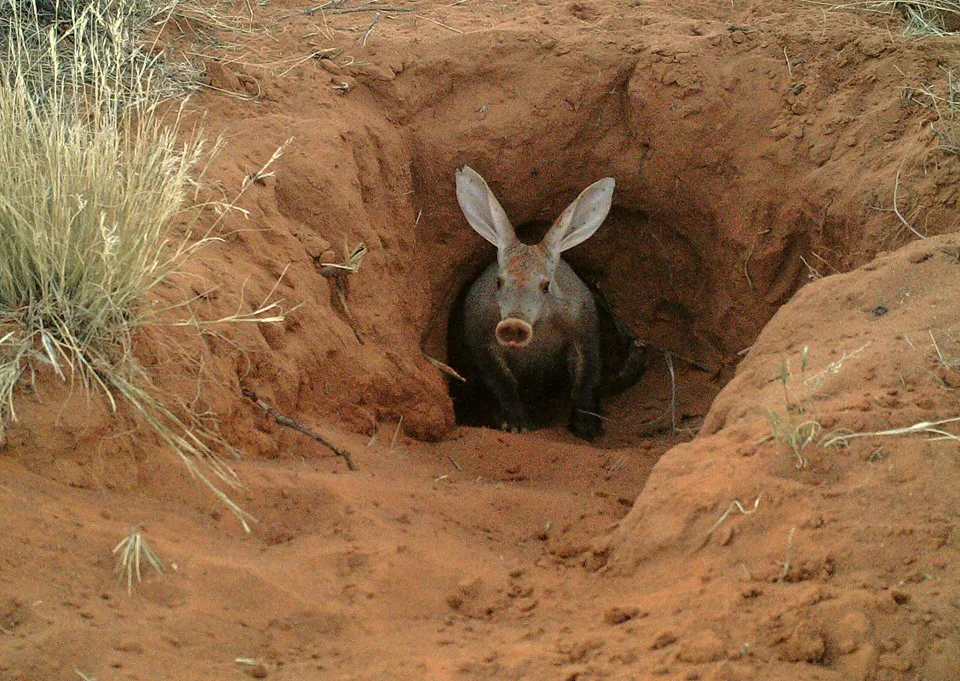
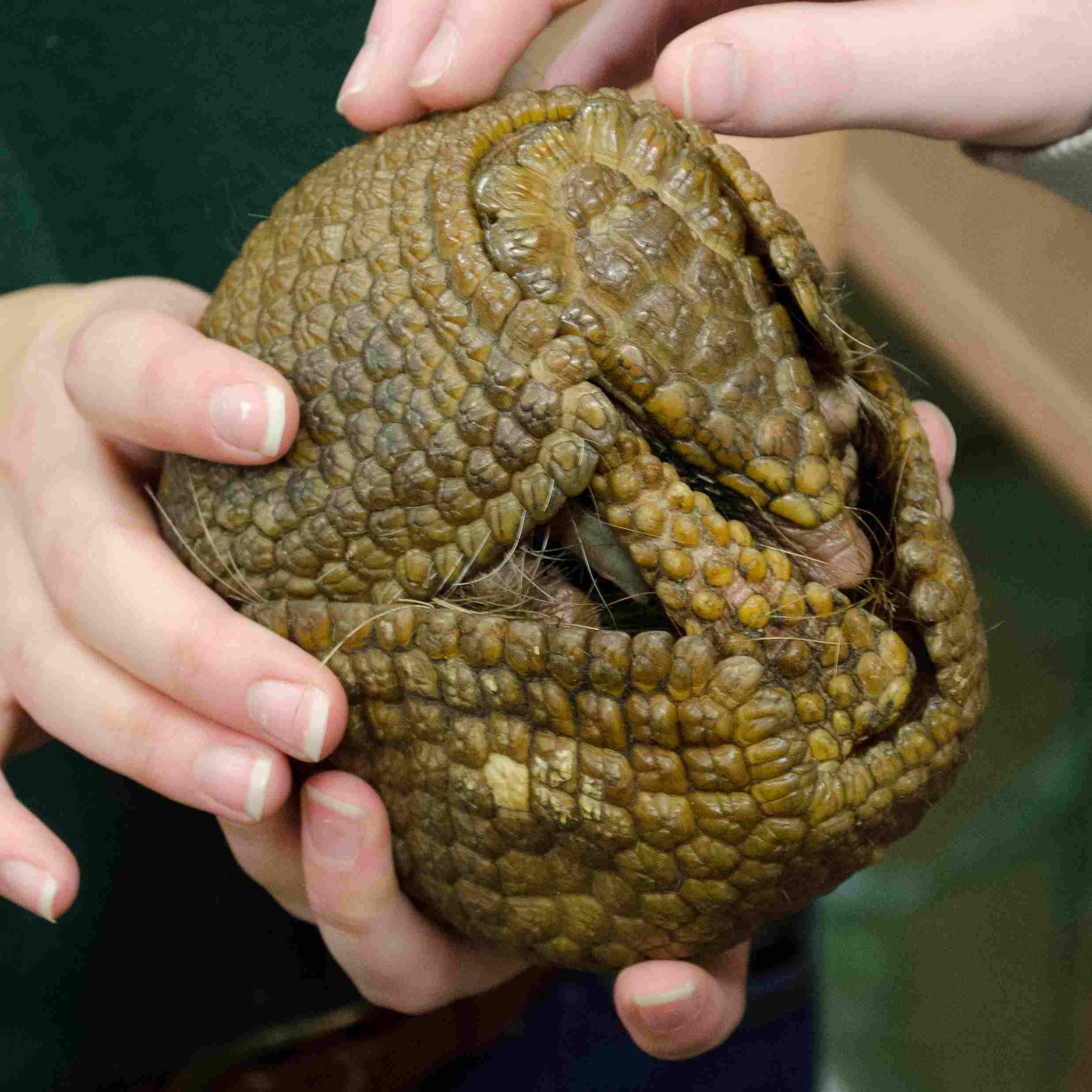
Aardvark:
Thick skin and tough hide provide some protection.
Anteater:
Sharp claws and strong tail for self-defense.
Armadillo:
Bony shell provides effective defense against predators.
Comparison:
Each species possesses unique defensive mechanisms – thick skin for aardvarks, sharp claws and tail for anteaters, and a protective shell for armadillos.
Ecological Implications:
Defense mechanisms influence interactions with predators and contribute to species survival.
8. Speed (Km/hour or Mile/hour):
Aardvark:
Limited speed, primarily adapted for digging rather than fast movement.
Anteater:
Moderate speed, capable of quick bursts when threatened.
Armadillo:
Variable speeds among species; some can run surprisingly fast.
Comparison:
Aardvarks are slower, anteaters have moderate speed, and armadillos vary in their running capabilities.
Ecological Implications:
Speed influences escape strategies, hunting techniques, and overall mobility within their habitats.
9. Agility:
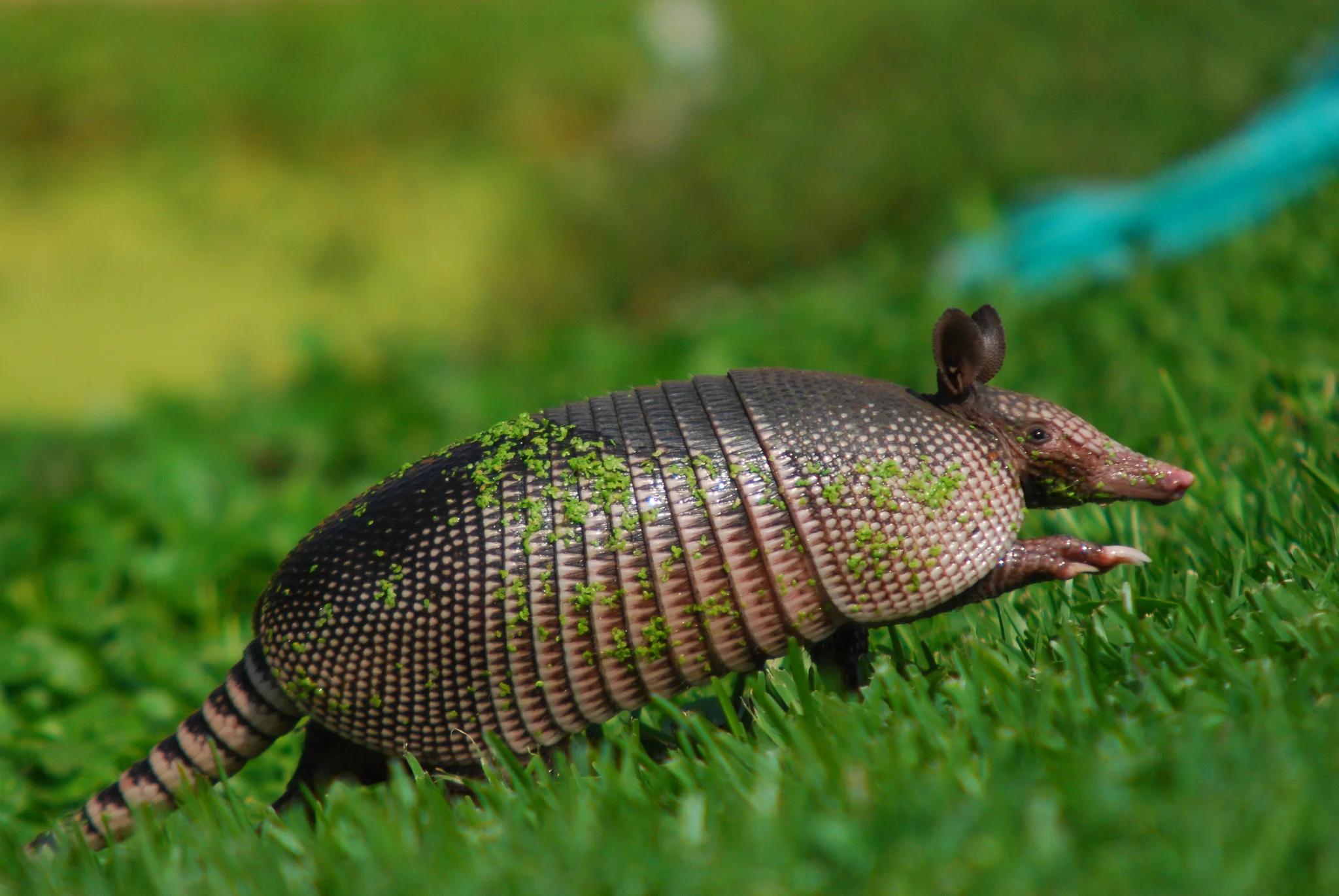
Aardvark:
Moderate agility, primarily adapted for digging and foraging.
Anteater:
Agile in navigating through vegetation to access ant and termite nests.
Armadillo:
Moderate agility; the armored shell limits flexibility.
Comparison:
Anteaters exhibit greater agility for navigating complex terrains compared to aardvarks and armadillos.
Ecological Implications:
Agility impacts the efficiency of movement within their respective habitats and during foraging activities.
10. Senses:
Aardvark:
Keen sense of smell for locating insects.
Anteater:
Excellent sense of smell and hearing, compensated by relatively poor eyesight.
Armadillo:
Limited eyesight but compensates with a strong sense of smell.
Comparison:
Aardvarks and anteaters rely heavily on their sense of smell, while armadillos have limited eyesight.
Ecological Implications:
Adaptations in senses contribute to their efficiency in foraging and avoiding predators.
11. Overall Physical Capacity:
Aardvark:
Specialized for digging and insectivory.
Anteater:
Well-adapted for ant and termite consumption.
Armadillo:
Versatile, with adaptations for digging, self-defense, and omnivorous feeding.
Comparison:
Each species has unique physical capacities tailored to their ecological niche.
Ecological Implications:
Physical capacities shape their roles in the ecosystem, affecting resource utilization and interactions with other species.
12. Habitat Preference(s) and Geographic Region:
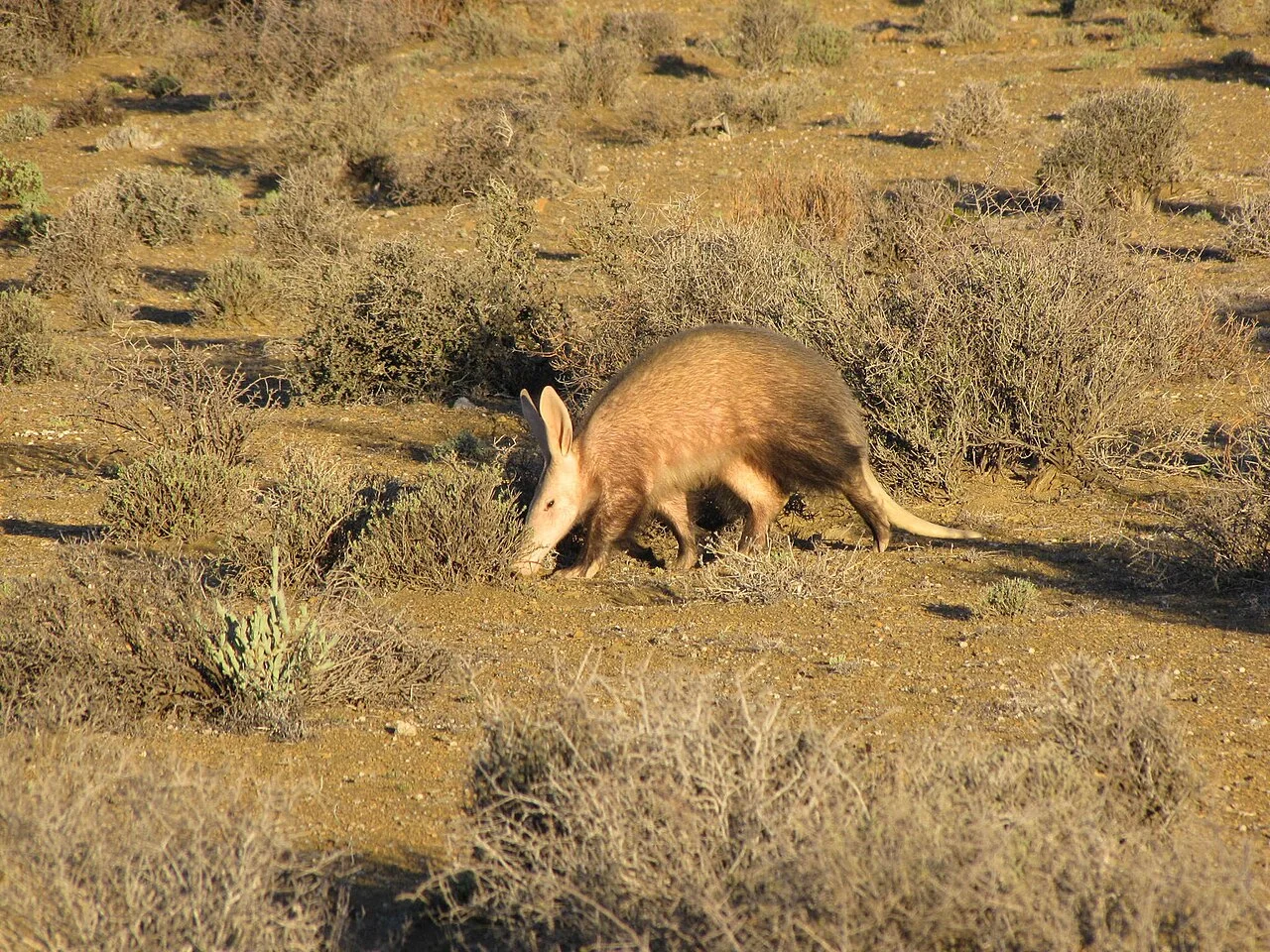
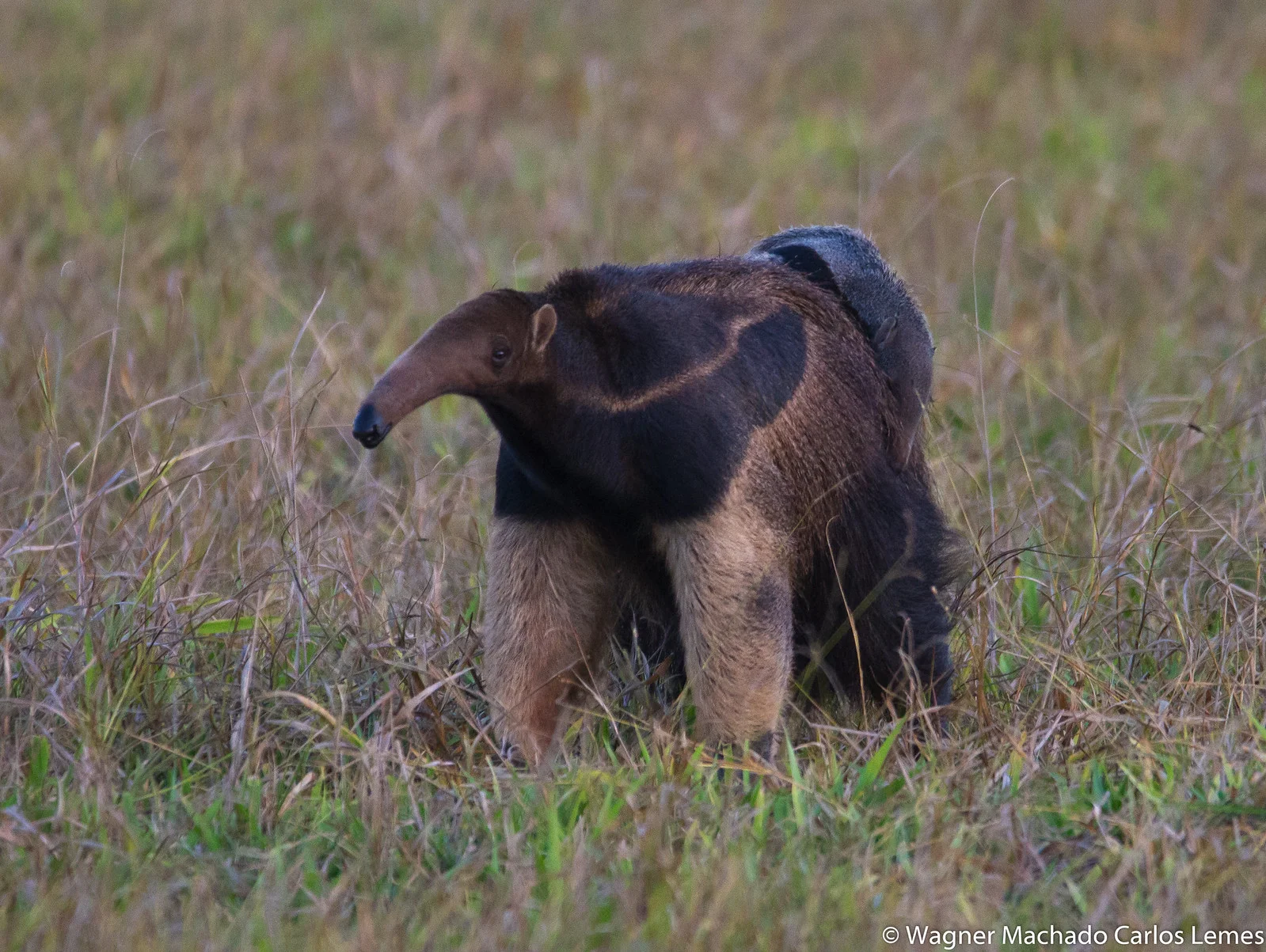
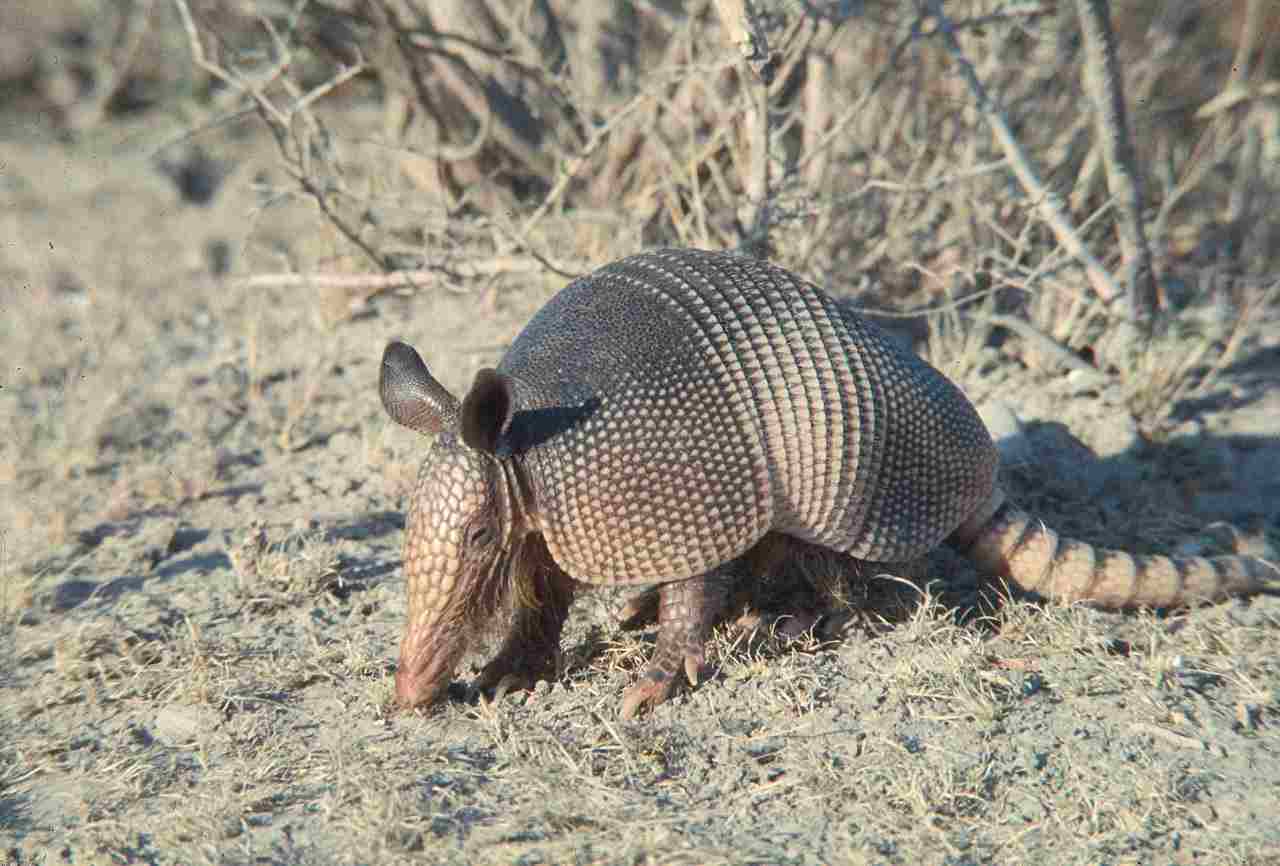
Aardvark:
Savannas, grasslands; sub-Saharan Africa.
Anteater:
Tropical and subtropical forests, grasslands; Americas.
Armadillo:
Varied habitats, including forests, grasslands, and deserts; Americas.
Comparison:
Aardvarks prefer African savannas, anteaters thrive in the Americas, and armadillos inhabit diverse environments.
Ecological Implications:
Habitat preferences impact their role in shaping local ecosystems.
13. Tracks:
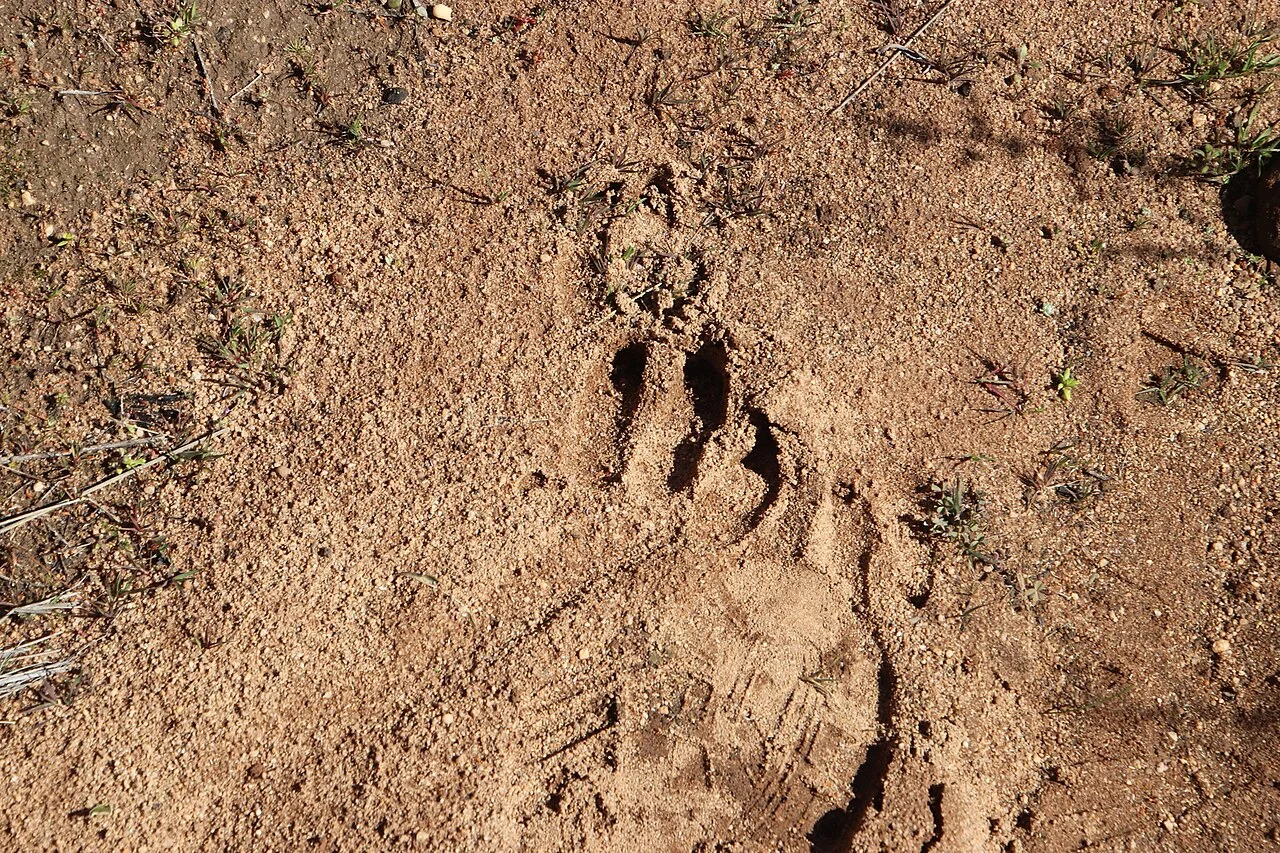
Aardvark:
Distinctive tracks with claw marks; often zigzag patterns.
Anteater:
Clawed tracks resembling a series of dots, reflective of their walking style.
Armadillo:
Clawed prints with a distinct overall shape.
Comparison:
Track morphology varies, with aardvark tracks showing zigzag patterns, anteaters leaving dotted prints, and armadillos displaying a unique shape.
Ecological Implications:
Tracking patterns can provide insights into behavior, movement, and habitat use.
14. Lifespan:
Aardvark:
Up to 23 years in captivity.
Anteater:
14 – 20 years in captivity.
Armadillo:
Varies by species, generally 4 – 15 years in captivity.
Comparison:
Aardvarks generally have a longer lifespan compared to anteaters and armadillos.
Ecological Implications:
Lifespan influences reproductive strategies and population dynamics within their ecosystems.
15. Mode of Feeding:
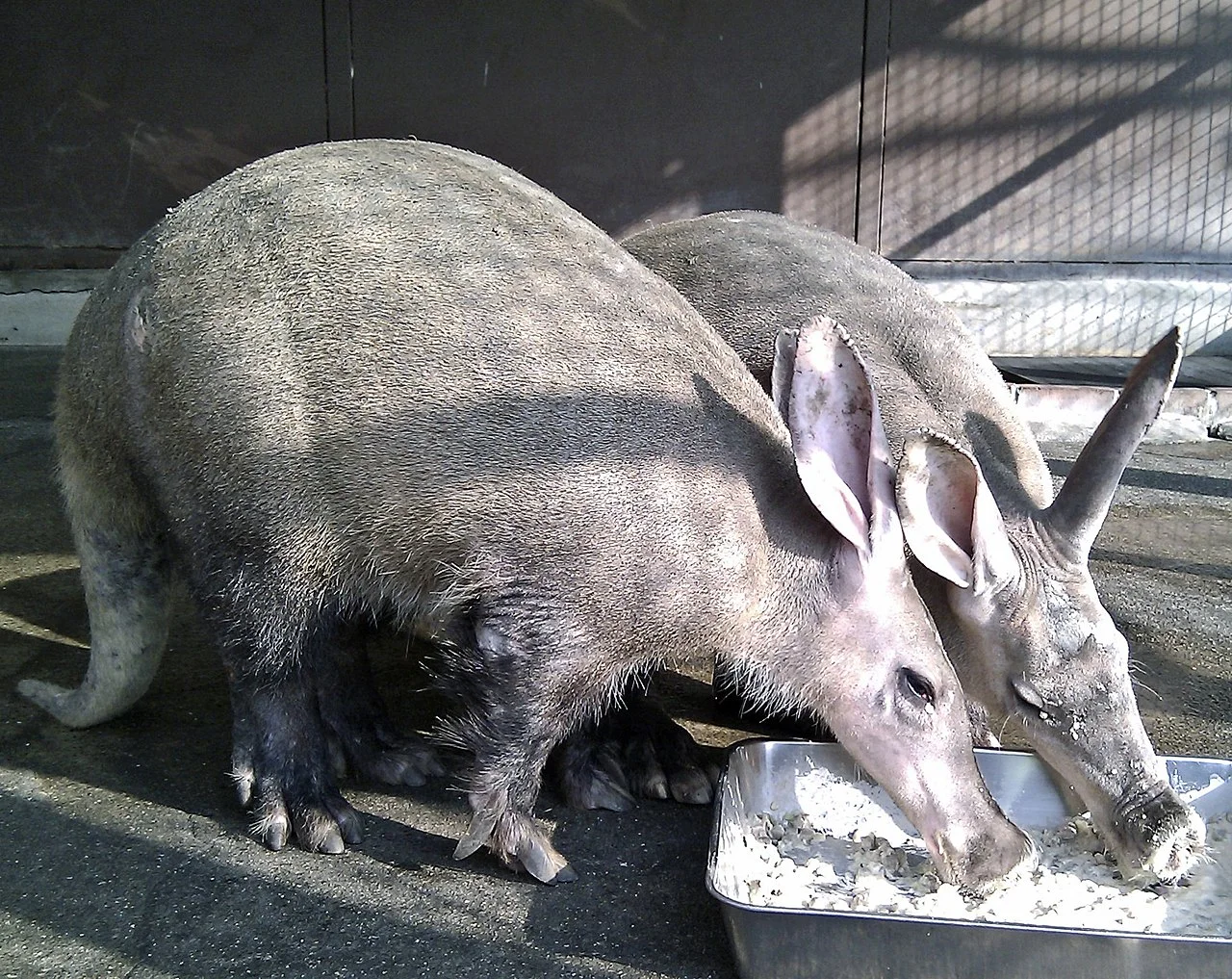
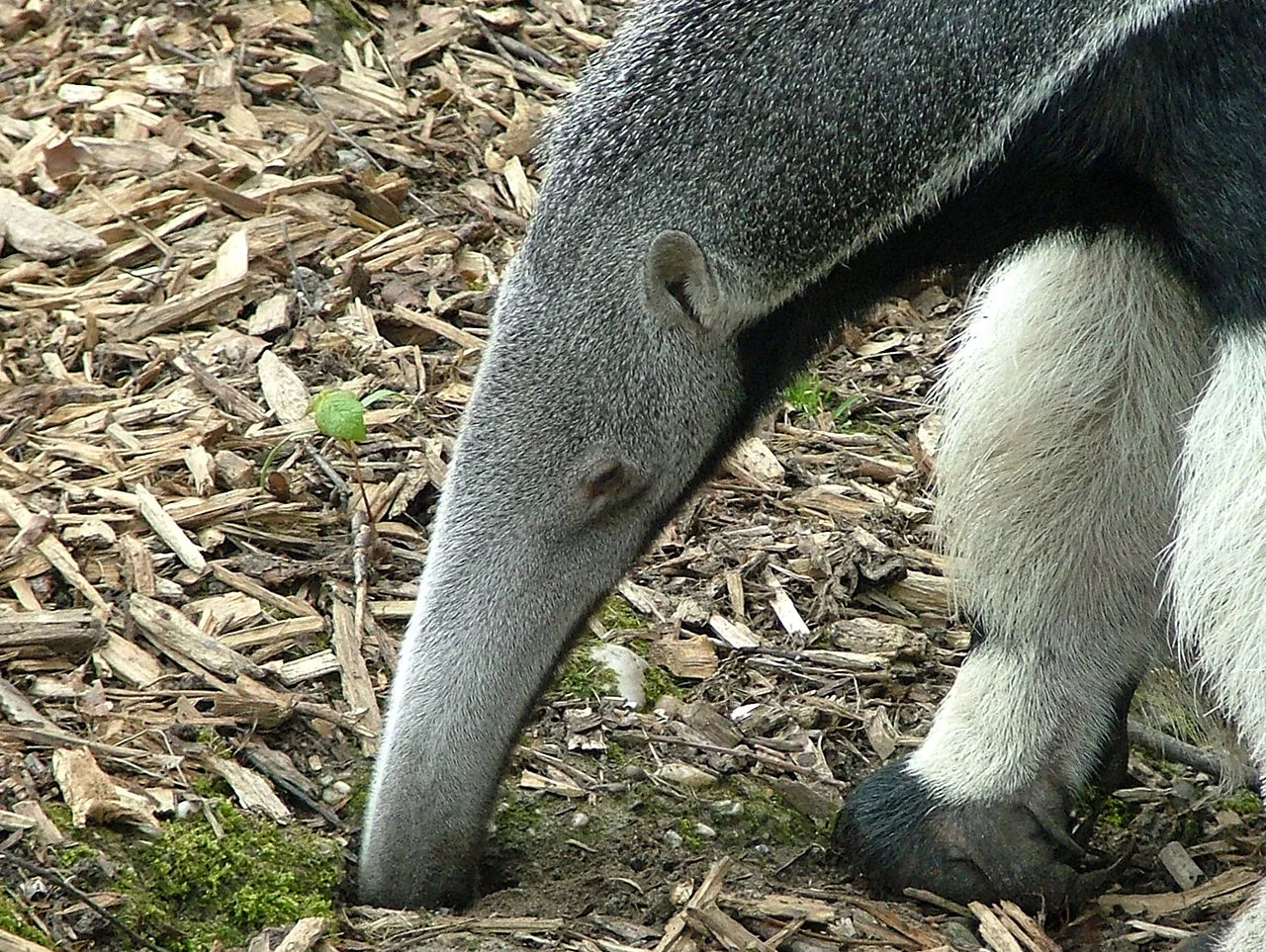
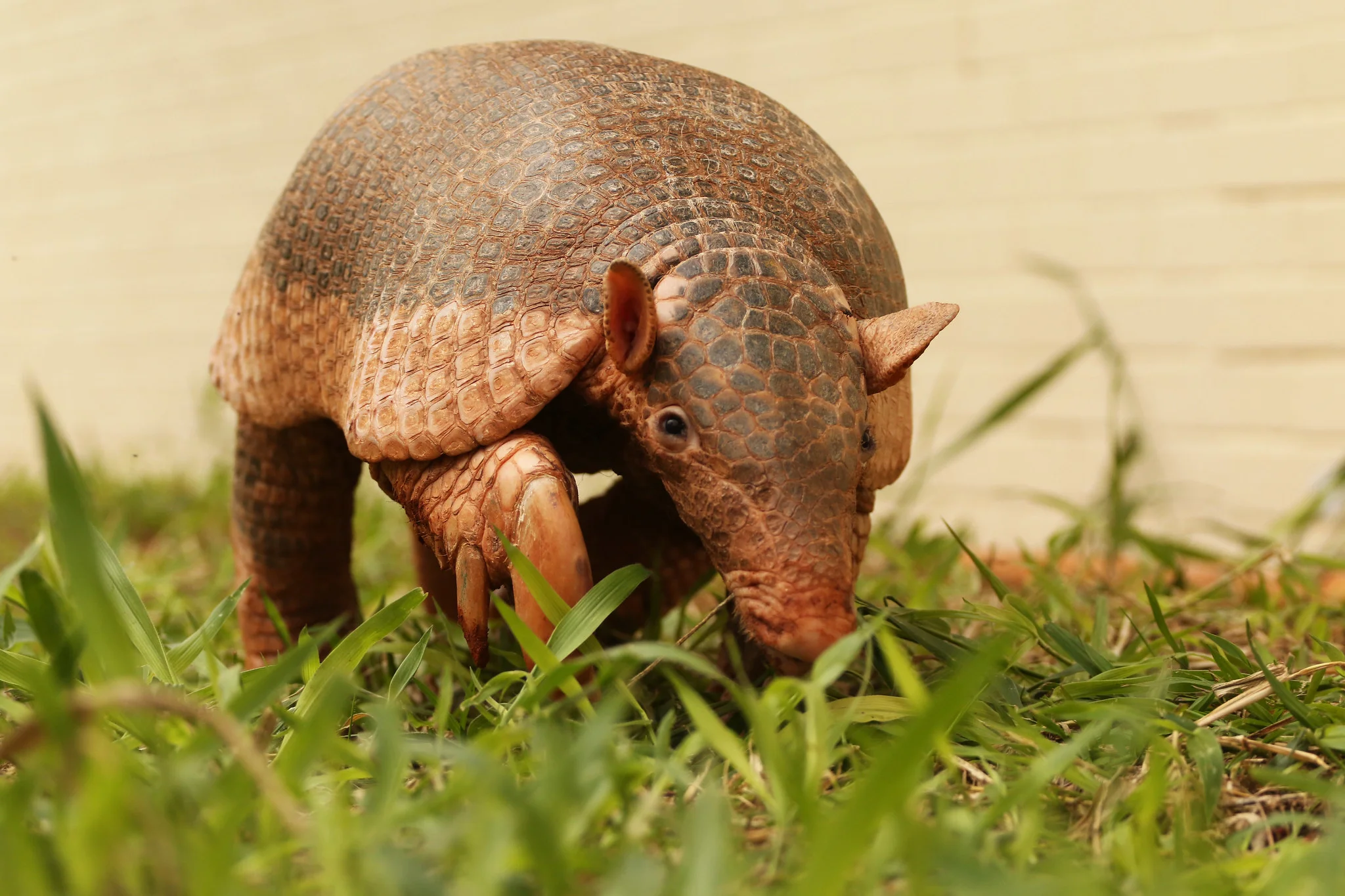
Aardvark:
Insectivorous; primarily feeds on termites and ants.
Anteater:
Myrmecophagy; consumes ants and termites using its long tongue.
Armadillo:
Omnivorous; diet includes insects, plants, and small vertebrates.
Comparison:
Aardvarks and anteaters are specialized insectivores, while armadillos have a more varied diet.
Ecological Implications:
Feeding preferences impact the balance of local insect populations and plant communities.
16. Intelligence:
Aardvark:
Limited cognitive abilities; focused on foraging and survival.
Anteater:
Moderate intelligence, with problem-solving abilities related to foraging.
Armadillo:
Basic problem-solving skills; exhibits some learning behaviors.
Comparison:
Anteaters tend to display more complex problem-solving skills compared to aardvarks and armadillos.
Ecological Implications:
Intelligence influences foraging efficiency, adaptability, and interactions with the environment.
17. Social Behavior:
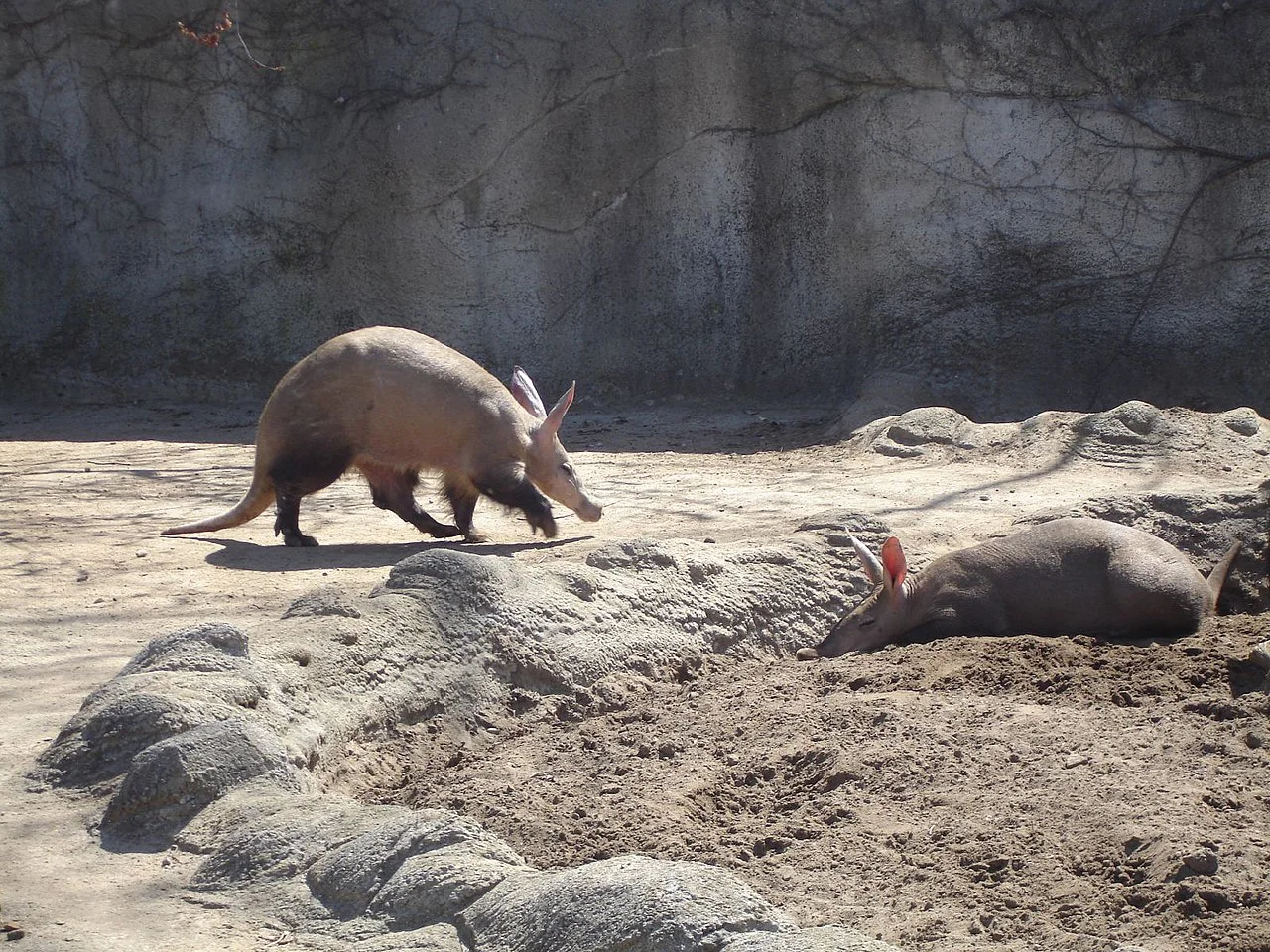
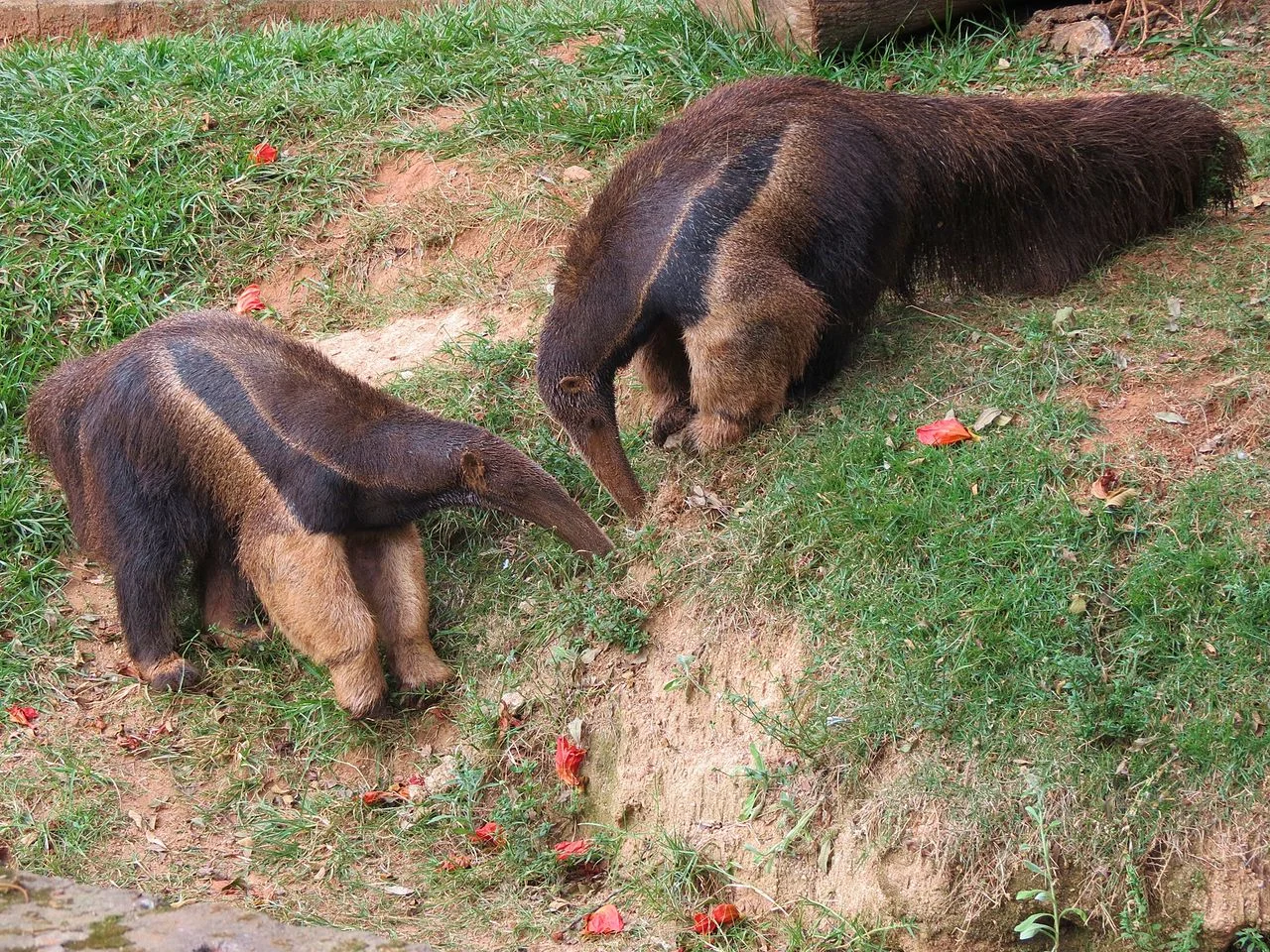
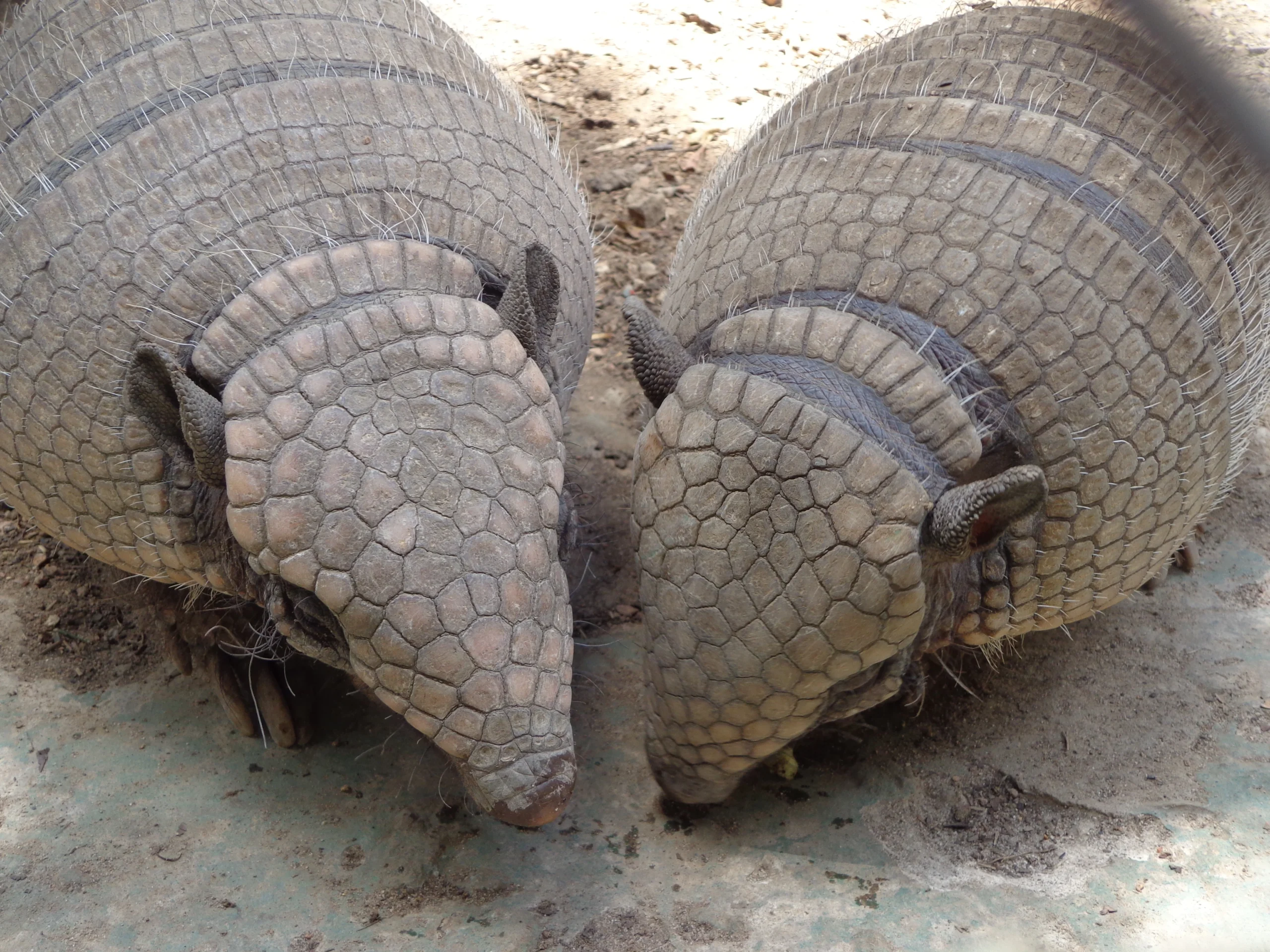
Aardvark:
Generally solitary; may have limited social interactions during mating.
Anteater:
Mostly solitary, except for mothers with offspring.
Armadillo:
Varies; some species are solitary, while others may form small groups.
Comparison:
Aardvarks, anteaters, and armadillos generally exhibit solitary behavior, with variations among armadillo species.
Ecological Implications:
Social behavior affects communication, resource sharing, and reproductive strategies within their habitats.
18. Mode of Reproduction:
Aardvark:
Generally solitary, with mating pairs coming together briefly.
Gestation period around 7 months; single offspring born.
Anteater:
Solitary; brief interactions between mates.
Gestation period around 190 days; single offspring born.
Armadillo:
Varied; some species have monogamous pairs, others are more solitary.
Gestation period varies; litter size varies, but often multiple offspring born.
Comparison:
While all three species generally have solitary lifestyles, mating and gestation processes vary.
Ecological Implications:
Reproductive strategies impact population dynamics and genetic diversity within their ecosystems.
19. Parental Behavior:
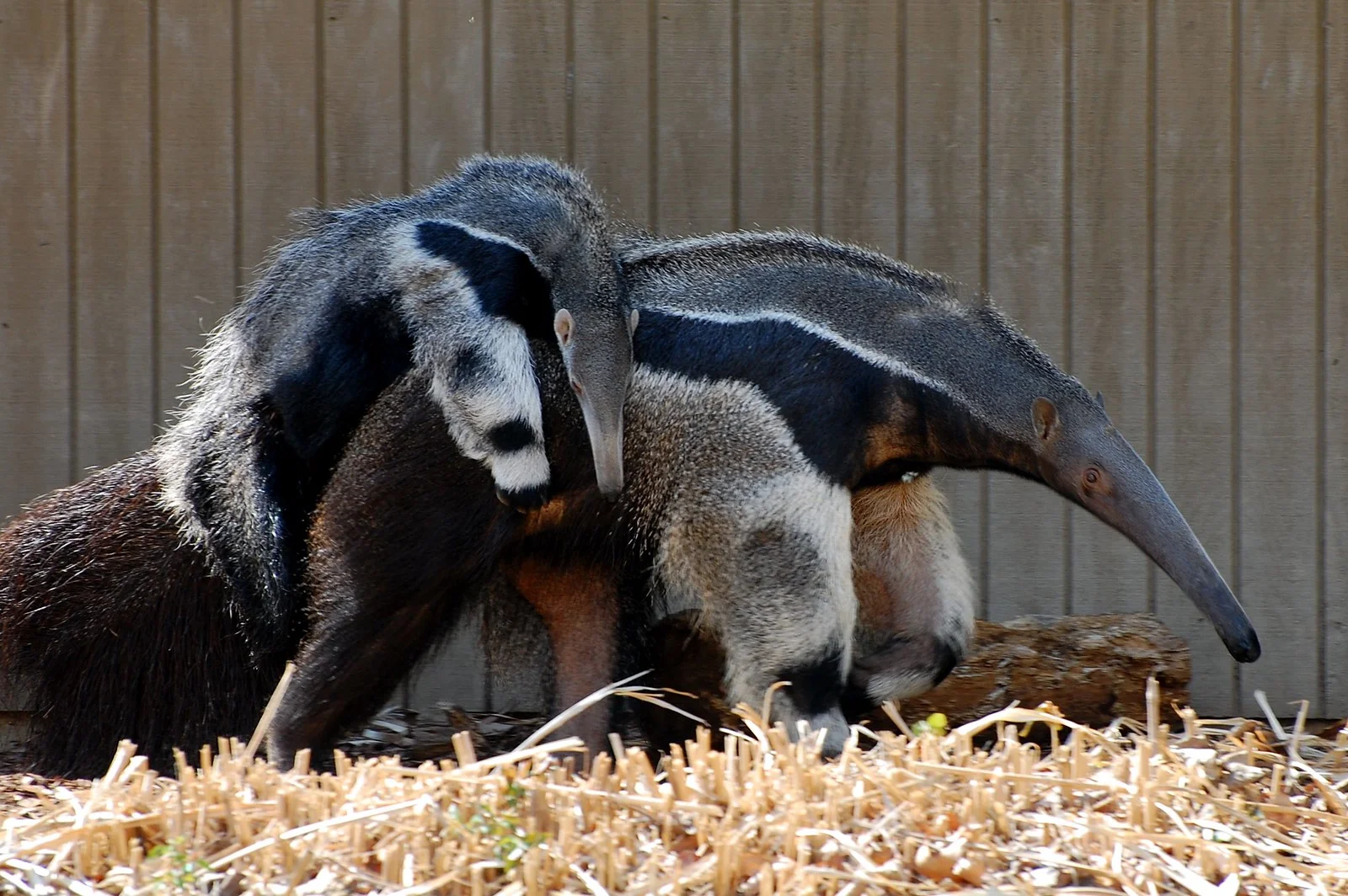
Aardvark:
Female cares for the single offspring.
Anteater:
Female provides care for the single offspring; males may be involved in protection.
Armadillo:
Maternal care varies; some species have more involved parental roles.
Comparison:
Parental roles differ, with varying levels of involvement in offspring care.
Ecological Implications:
Parental behavior influences the survival and development of offspring, impacting population dynamics.
20. Proximity to Human-Inhabited Areas:
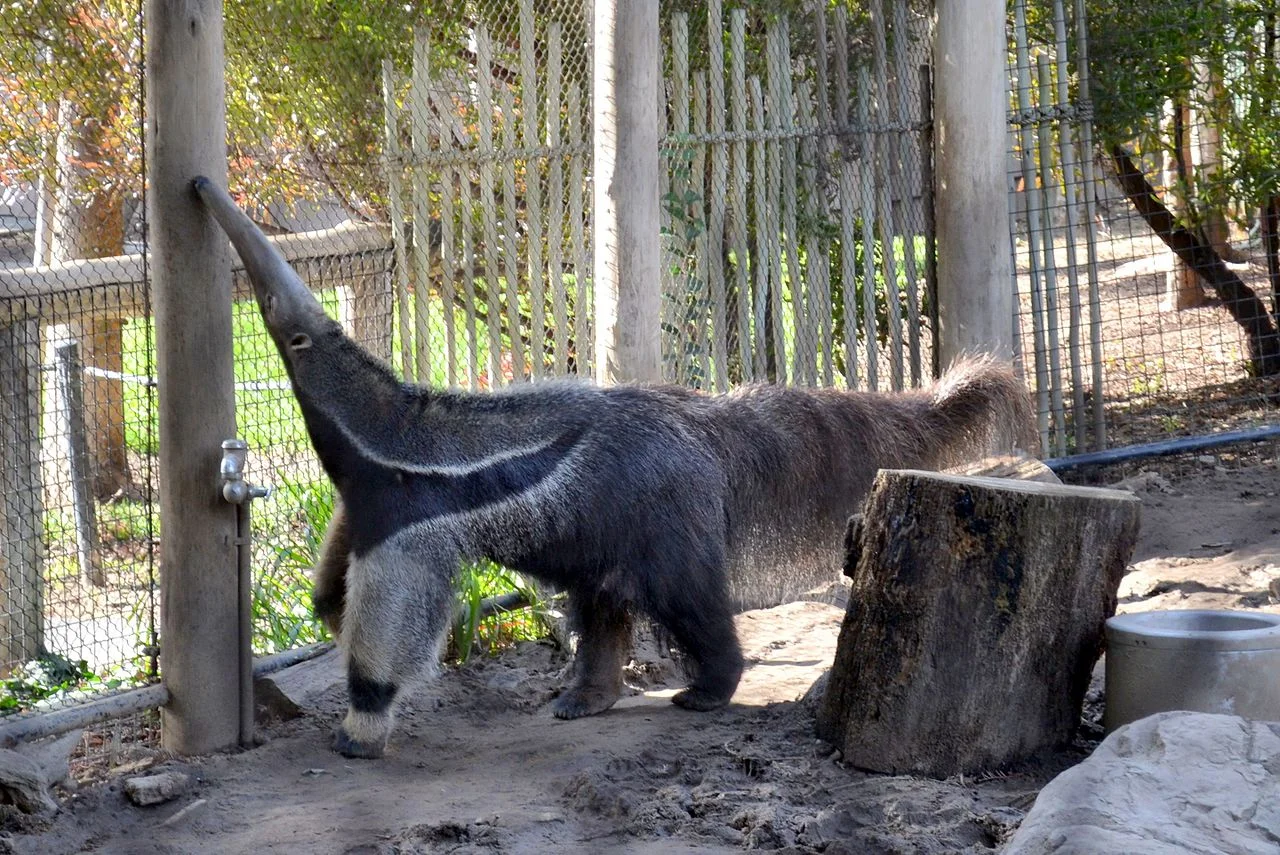
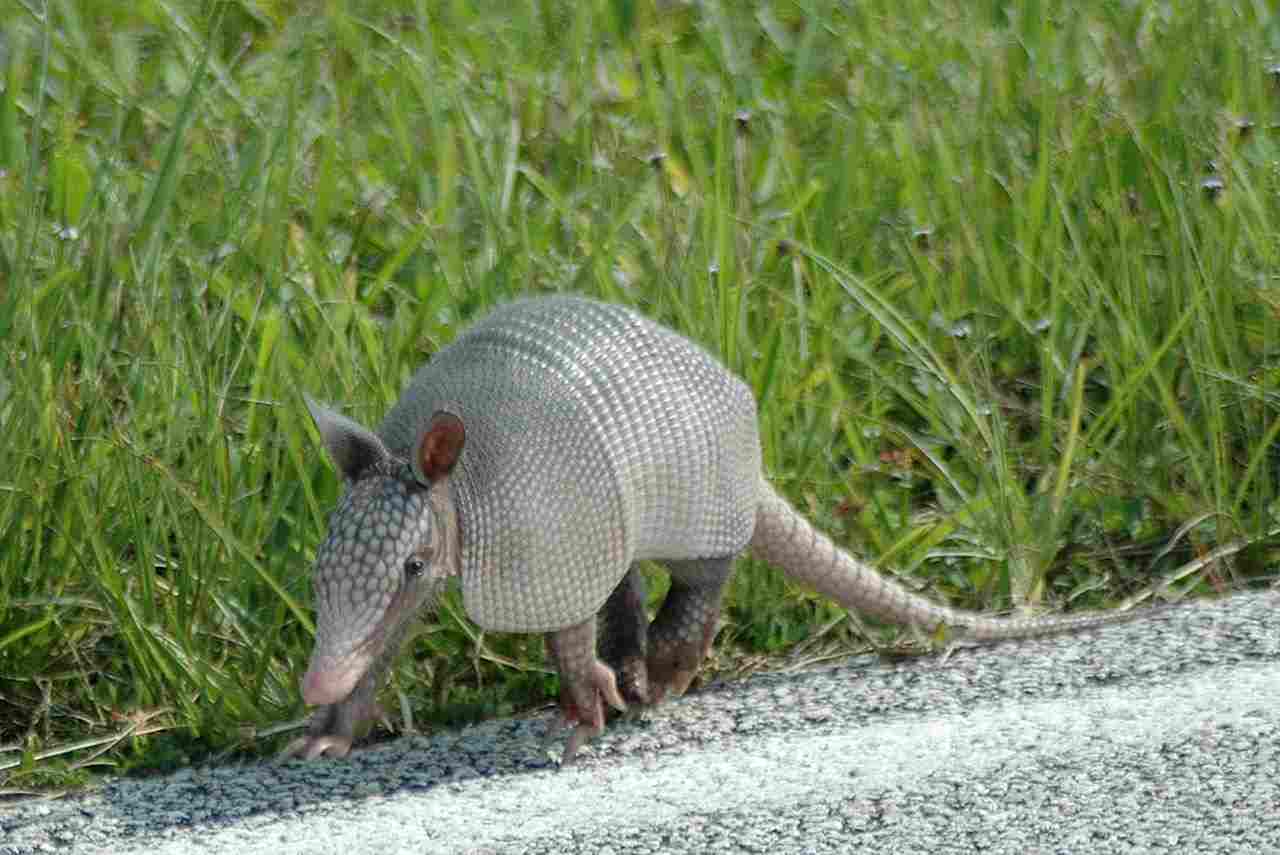
Aardvark:
Can be found near human settlements but may avoid heavily populated areas.
Anteater:
Generally avoids human-inhabited areas but may encounter them in fragmented habitats.
Armadillo:
Some species adapt well to human-altered environments, may be found near urban areas.
Comparison:
The degree of tolerance or avoidance of human-inhabited areas varies among the three species.
Ecological Implications:
Human interactions can impact their habitats, food sources, and overall well-being.
21. Behavior Toward Humans:
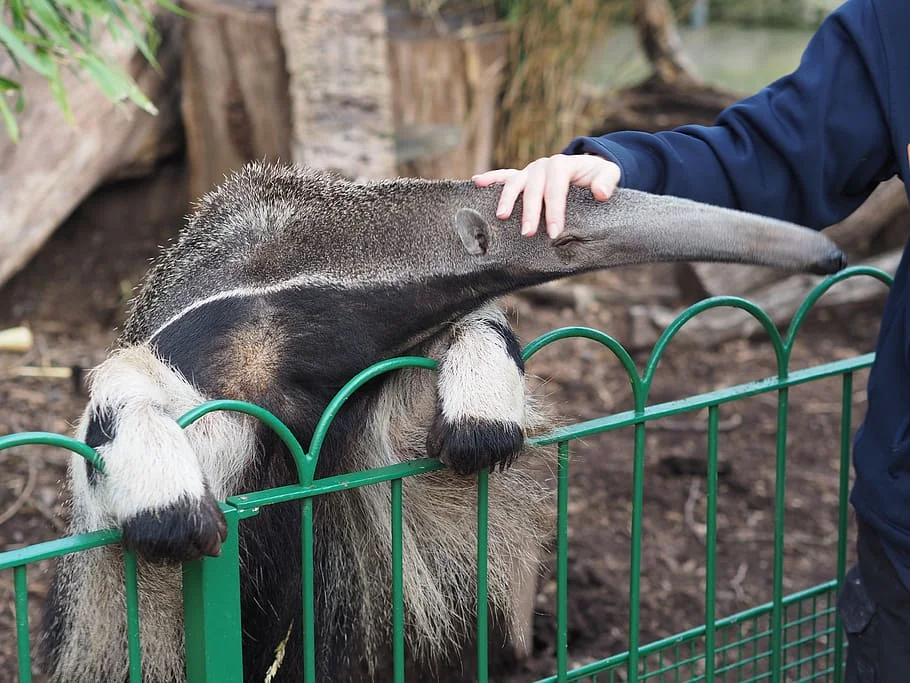
Aardvark:
Generally shy and elusive, may avoid direct contact with humans.
Anteater:
Typically avoids human interaction; may display defensive behavior if cornered.
Armadillo:
Behavior varies; some species may tolerate human presence, while others may be more elusive.
Comparison:
Aardvarks, anteaters, and armadillos generally exhibit avoidance behavior towards humans.
Ecological Implications:
Human interactions can disrupt natural behaviors and may lead to stress or changes in local populations.
22. Danger Posed to Humans:
Aardvark:
Generally not considered dangerous to humans; shy and nocturnal.
Anteater:
Typically not aggressive, but may defend itself if threatened; claws can cause injury.
Armadillo:
Generally not dangerous; may carry diseases like leprosy, posing a minimal risk.
Comparison:
While not inherently dangerous, each species has its own potential risks or defensive mechanisms.
Ecological Implications:
Understanding potential risks informs human-wildlife interactions and conservation efforts.
23. Associated Precautions:
Aardvark:
Caution required during encounters; avoid cornering or provoking.
Anteater:
Maintain a safe distance; avoid threatening gestures or actions.
Armadillo:
Exercise general hygiene practices; avoid direct handling due to disease risks.
Comparison:
Precautions vary based on the species’ behavior and potential risks they pose.
Ecological Implications:
Responsible interactions reduce negative impacts on the species and their ecosystems.
24. Conservation Status:
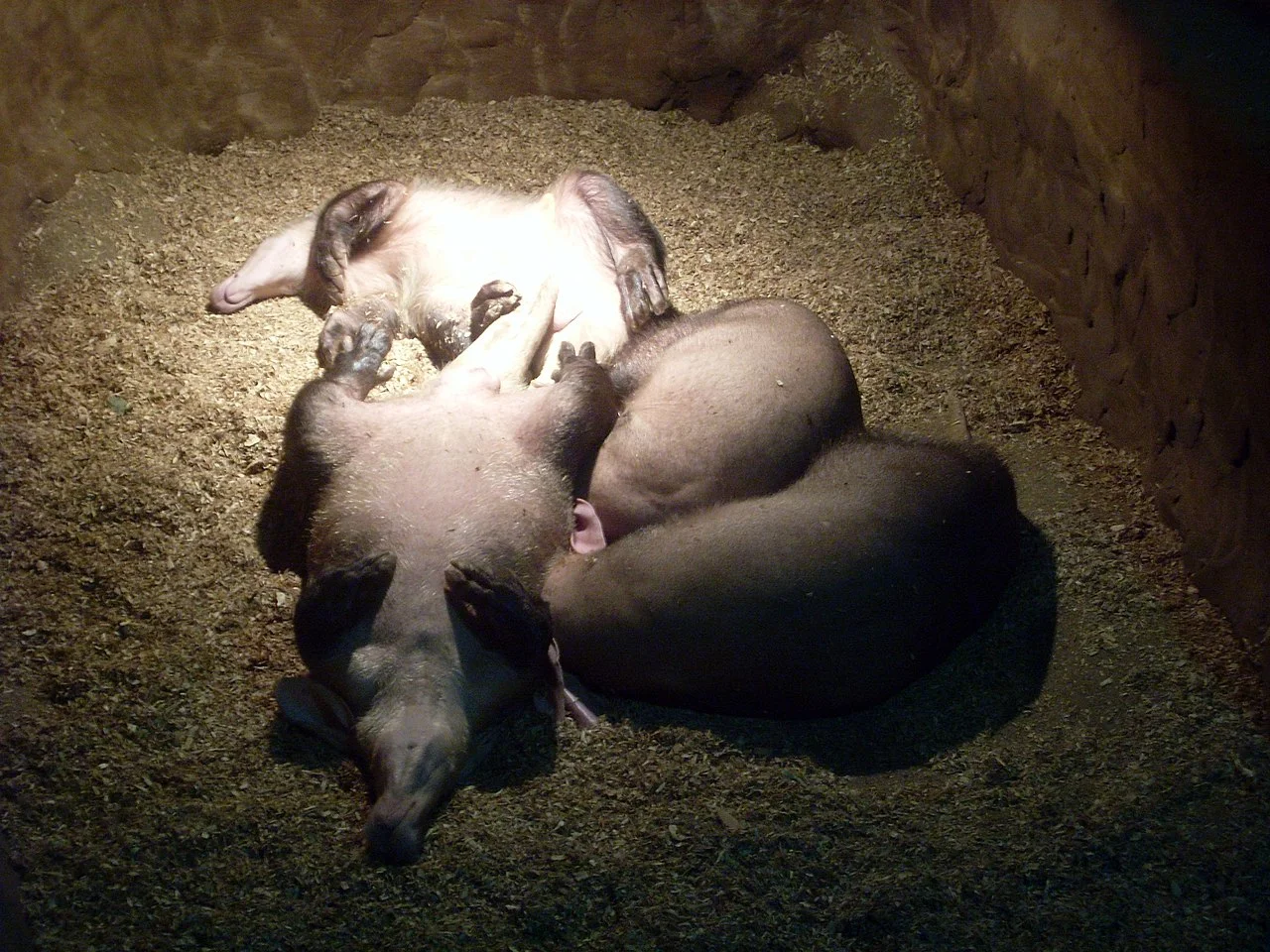
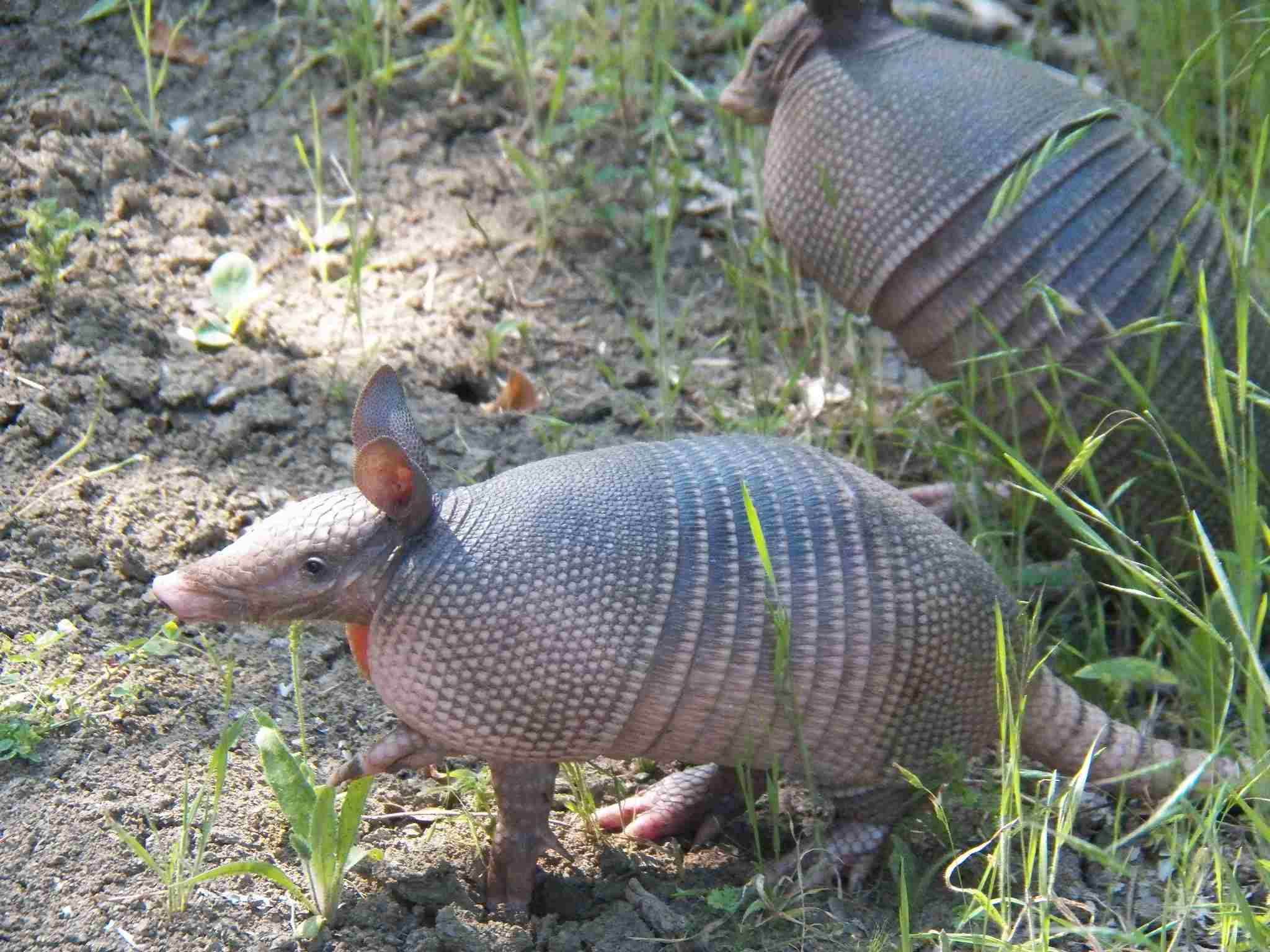
Aardvark:
Least Concern (IUCN Red List) as of last knowledge update.
Anteater:
Varies by species; some are of Least Concern, while others are Threatened or Near Threatened.
Armadillo:
Conservation status varies among species; some are of Least Concern, while others are Threatened.
Comparison:
Conservation status reflects the varying levels of threat and concern across species.
Ecological Implications:
Conservation efforts may be needed for certain species to ensure the health of ecosystems they inhabit.
*Summary of Comparison
Taxonomy:
Aardvark belongs to the order Tubulidentata, anteater to Pilosa, and armadillo to Cingulata.
Appearance:
Aardvark has a pig-like snout, anteater an elongated head, and armadillo an armored shell.
Size:
Aardvark and anteater are similar in size, while armadillos vary widely.
Weight:
Aardvarks are heavier, anteaters lighter, and armadillos vary in weight.
Dentition:
Aardvark has specialized teeth, anteater lacks teeth, and armadillo has basic grinding teeth.
Physical Offensive Advantages:
Aardvark and anteater use specialized limbs, while armadillo relies on claws.
Physical Defensive Advantages:
Aardvark has thick skin, anteater has sharp claws, and armadillo has a protective shell.
Speed:
Aardvark is slower, anteater has moderate speed, and armadillo varies in speed.
Agility:
Anteaters exhibit greater agility than aardvarks and armadillos.
Senses:
Aardvark and anteater rely heavily on smell, while armadillos have limited eyesight.
Overall Physical Capacity:
Each species has unique physical capacities tailored to their ecological niche.
Habitat Preference and Geographic Region:
Aardvark prefers African savannas, anteaters thrive in the Americas, and armadillos inhabit diverse environments.
Tracks:
Aardvark tracks show zigzag patterns, anteaters leave dotted prints, and armadillos have a unique shape.
Lifespan:
Aardvarks generally have a longer lifespan compared to anteaters and armadillos.
Mode of Feeding:
Aardvark and anteater are specialized insectivores, while armadillos have a more varied diet.
Intelligence:
Anteaters tend to display more complex problem-solving skills compared to aardvarks and armadillos.
Social Behavior:
Aardvarks, anteaters, and armadillos generally exhibit solitary behavior.
Mode of Reproduction:
While all three species generally have solitary lifestyles, mating and gestation processes vary.
Parental Behavior:
Parental roles differ, with varying levels of involvement in offspring care.
Proximity to Human-Inhabited Areas:
Aardvarks, anteaters, and armadillos have varying degrees of tolerance or avoidance of human-inhabited areas.
Behavior Toward Humans:
Aardvarks, anteaters, and armadillos generally exhibit avoidance behavior towards humans.
Danger Posed to Humans:
While not inherently dangerous, each species has its own potential risks or defensive mechanisms.
Associated Precautions:
Precautions vary based on the species’ behavior and potential risks they pose.
Conservation Status:
Conservation status varies among species within each group.
Conclusion
I). Similarities:
All three species are mammals adapted to different ecological niches.
They exhibit solitary behavior with varying degrees of social interactions.
Each has a specific diet, contributing to their ecological roles.
II). Differences:
Varying habitat preferences and geographic distributions.
Diverse reproductive strategies and parental behaviors.
Different modes of defense and potential risks posed to humans.
Unique adaptations and features influencing their ecological roles.
